Liquid Glass, subtle AI and cross-device continuity define Apple’s new 26-branded OS
At WWDC25, Apple announced a raft of design changes, rolling out iOS 26, iPadOS 26, macOS Tahoe 26, watchOS 26, and tvOS 26 to the delight of attending developers
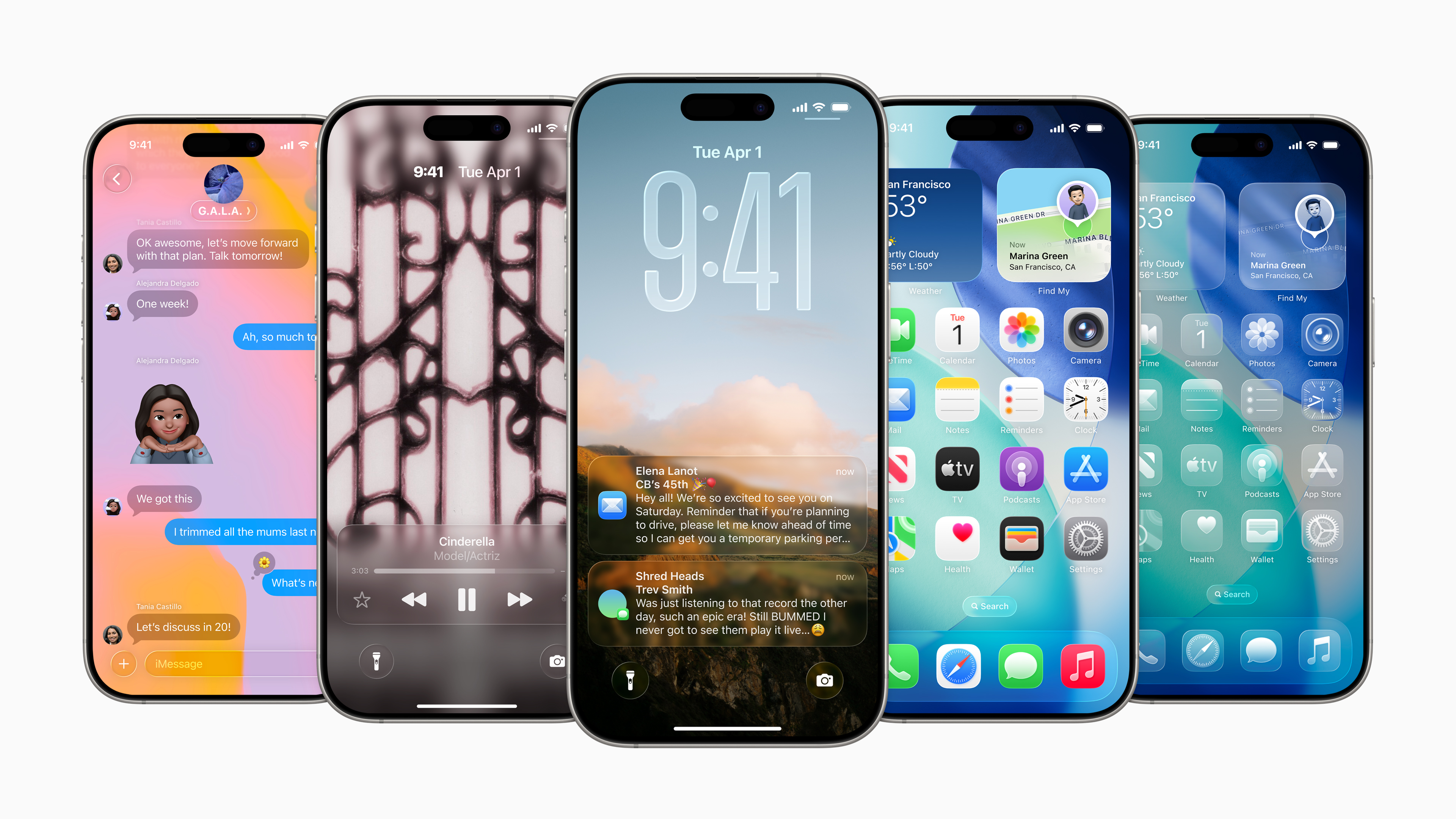
Apple WWDC25
Apple didn’t invent the touchscreen interface, but it arguably perfected it. The combination of the original 2007 iPhone’s multi-touch 3.5” screen (with its 320‑by‑480 pixel resolution) with the original OS 1 marked a paradigm shift in mobile devices, one that still resonates today. From that moment It changed the way people interacted with screens, big and small, ushering in an era of scrolling, pinching, zooming and swiping.

iOS 26 allows for unprecedented home screen customisation
Regardless of whether there’s a genuine smartphone killer lurking in the wings, the device as we know it is here to stay for the foreseeable future. Estimates suggest there are over 6 billion smartphones in use in the world; at least one billion of those were made by Apple.
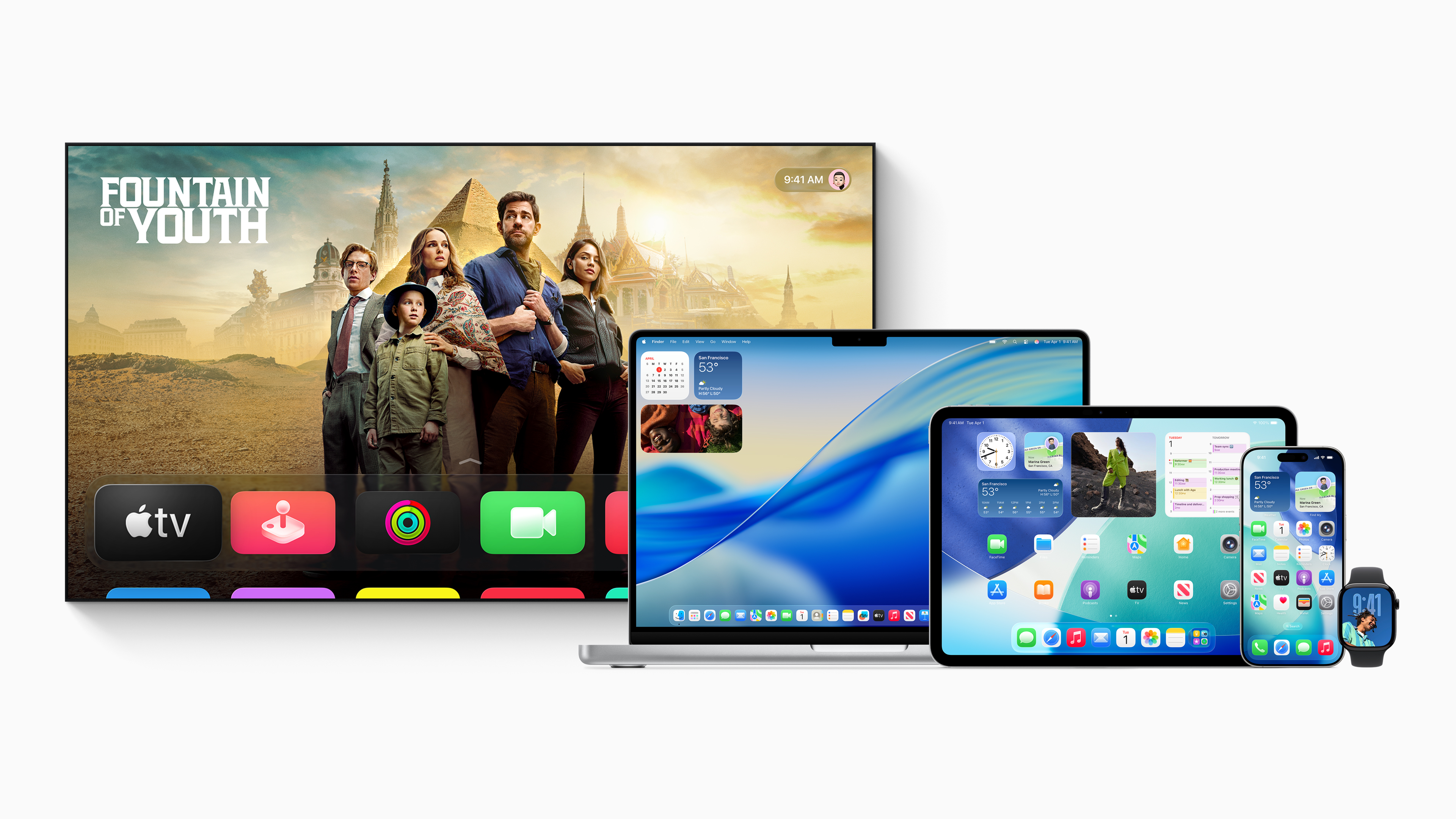
From Apple TV to the Apple Watch, a new design aesthetic
So any change to the status quo is going to draw attention. June 9th saw the reveal of iOS 26, a generation skipping OS update (iPhones currently run iOS 18.5) that will roll out to users this Autumn. Countless iterations after the original debuted, iOS has been renewed and reborn once again, revealed first to the faithful at Apple’s annual World Wide Developers Conference at Apple Park in Cupertino.
The audience consists of the folk who build the apps and services that rely on Apple’s ecosystem. Invited – via a lottery system – to descend on Cupertino to download all the latest intel direct from the source, 2025’s WWDC (or ‘Dub Dub’ in developer parlance) didn’t disappoint those who made the physical and spiritual return to the mothership.
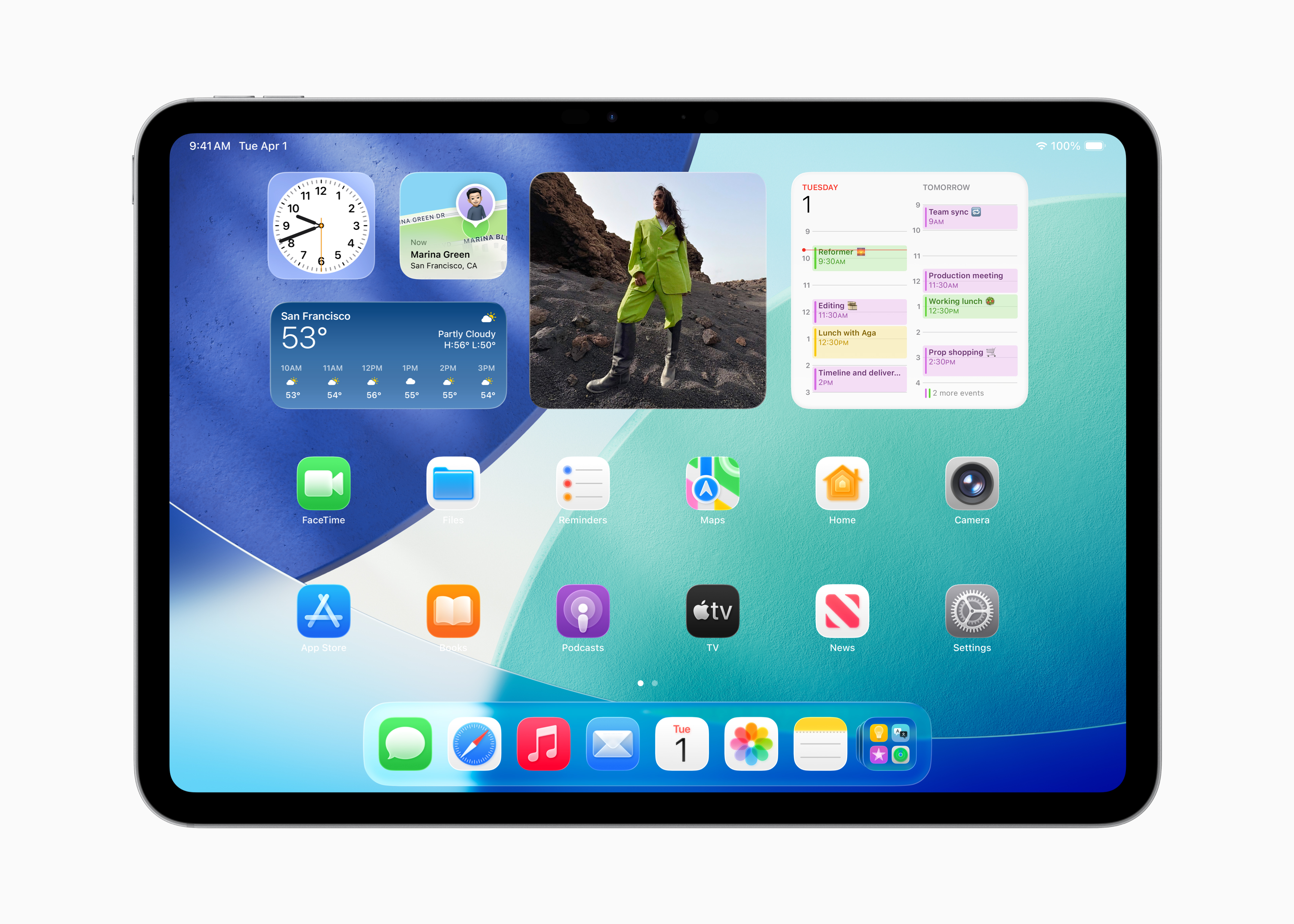
Apple iPadOS 26 home screen
Tim Cook’s arrival is greeting with fervour, as he introduces a week of ‘announcements, insights and meaningful connections’ for the lucky teams selected to spend the next few days deep in hands-on workshops with the new OS. We were then treated to a droll skit playing on Apple’s upcoming big budget Brad Pitt extravaganza, F1, which cast SVP of Software Engineering Craig Federighi as a bouffant racing driver powering around a CGI track atop the vast Foster & Partners building before the big announcements started.
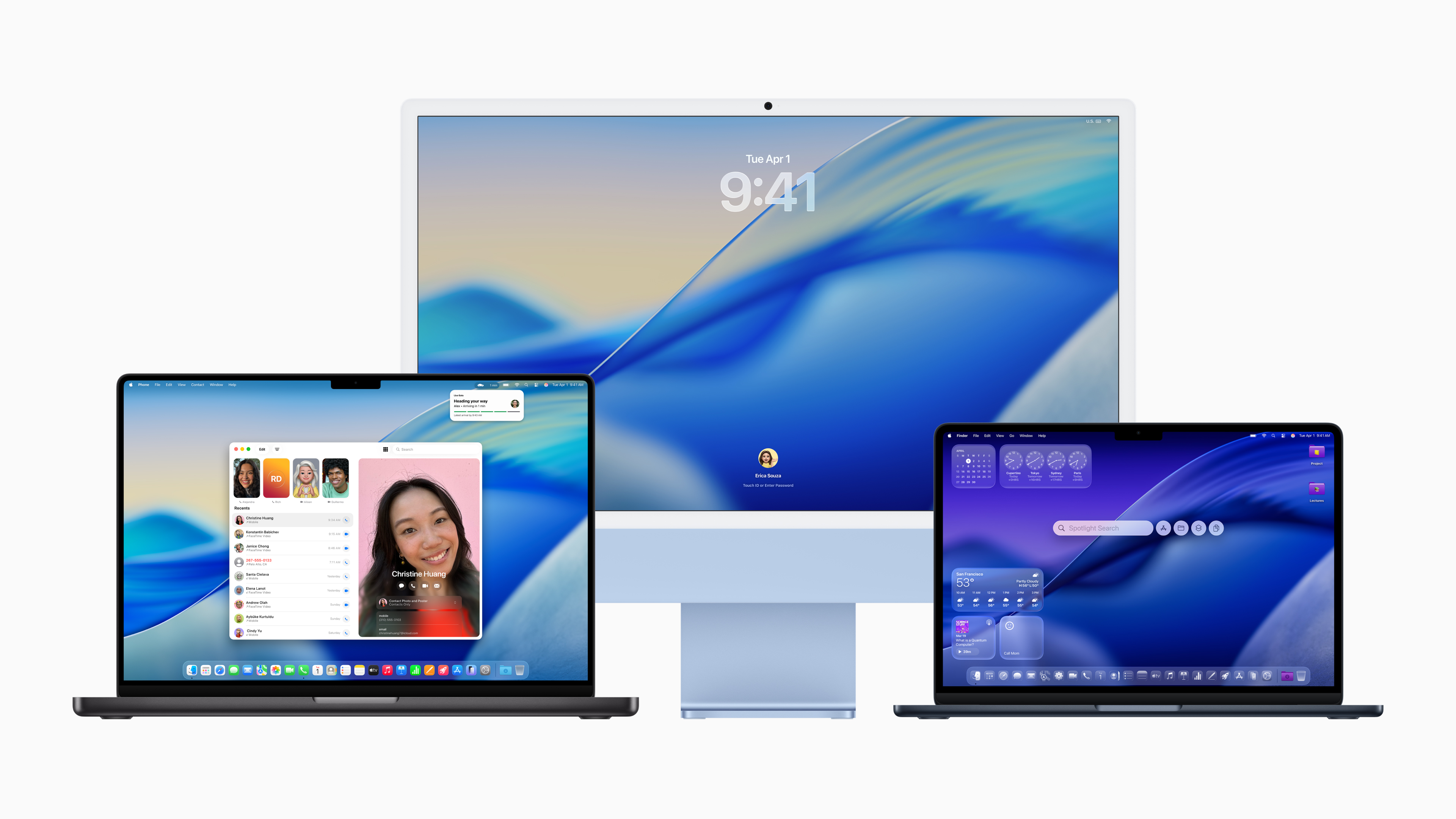
Apple macOS Tahoe 26
Apple’s fans live very willingly in Apple’s world, and the big takeaway from WWDC 2025 was the unification of the company’s various operating systems all united by a new aesthetic approach, Liquid Glass. Not only is there visual parity between iPad, Mac, iPhone, Apple Watch, etc., but there’s to be new levels of connectivity and continuity between your devices, with Apple Intelligence serving as a layer of glue binding information gathering and display.
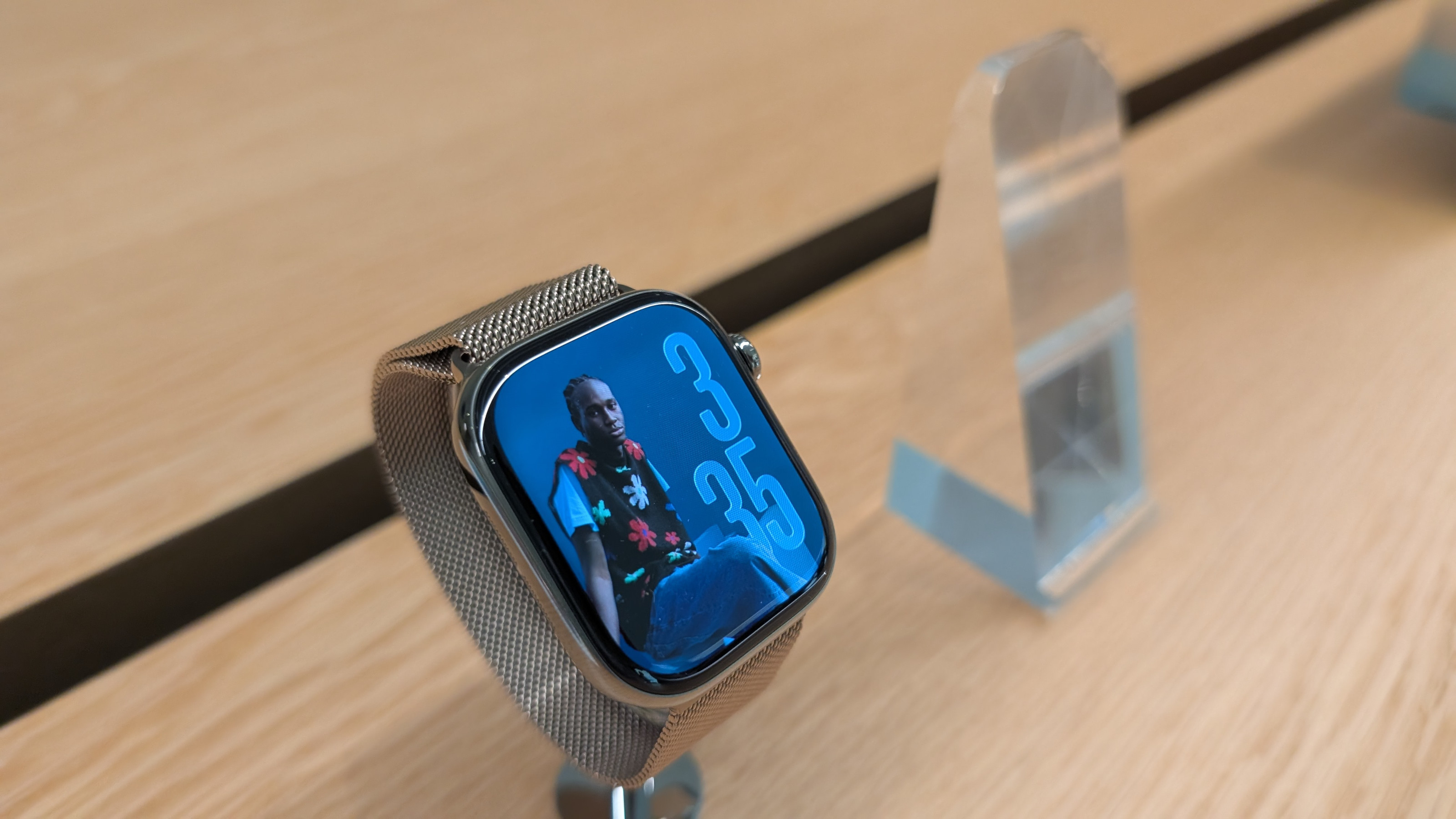
The new OS in action on the Apple Watch
The last ‘major’ iOS revamp was iOS 7, revealed at WWDC in June 2013. Since then, the OS has been incrementally, often radically, updated year on year, even though the core functionality remained as before. iOS 7 marked the point that Jony Ive began overseeing software in addition to hardware. It combined a new ‘flat’ design language with sharper, more vivid colours and forms, as well as new animations.
Receive our daily digest of inspiration, escapism and design stories from around the world direct to your inbox.
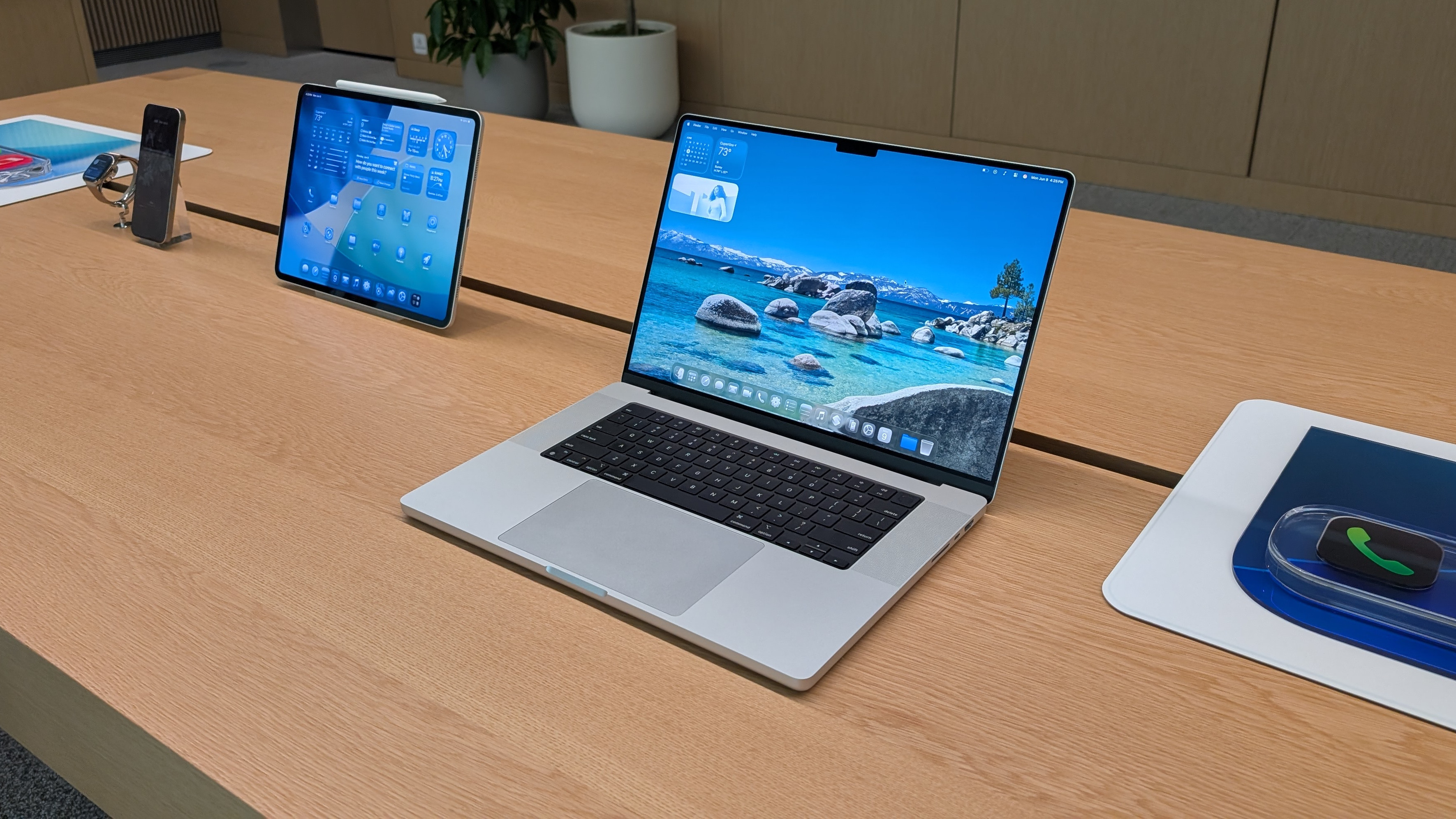
The new OS in action across Apple devices
With Ive long gone, iOS26 is a rebuff of sorts, a clear move away from flat design towards a richer, deeper visual language that uses clever coding to enhance the perception of depth. This is where Liquid Glass comes into its element, bringing what Apple's vice president of Human Interface Design Alan Dye describes as ‘moments of beauty, craft and joy that bring our products to life.’
The feel of pinching, sliding, gliding and zooming through the new interface is heightened by the new tabard, a virtual lens of glass (or a droplet of water) that appears to magnify what’s beneath it. The origins of the Liquid Glass design language emerged out of Apple Vision Pro and the first iteration of Vision OS, a system that required the layering and overlaying imagery and information to be the primary design consideration.
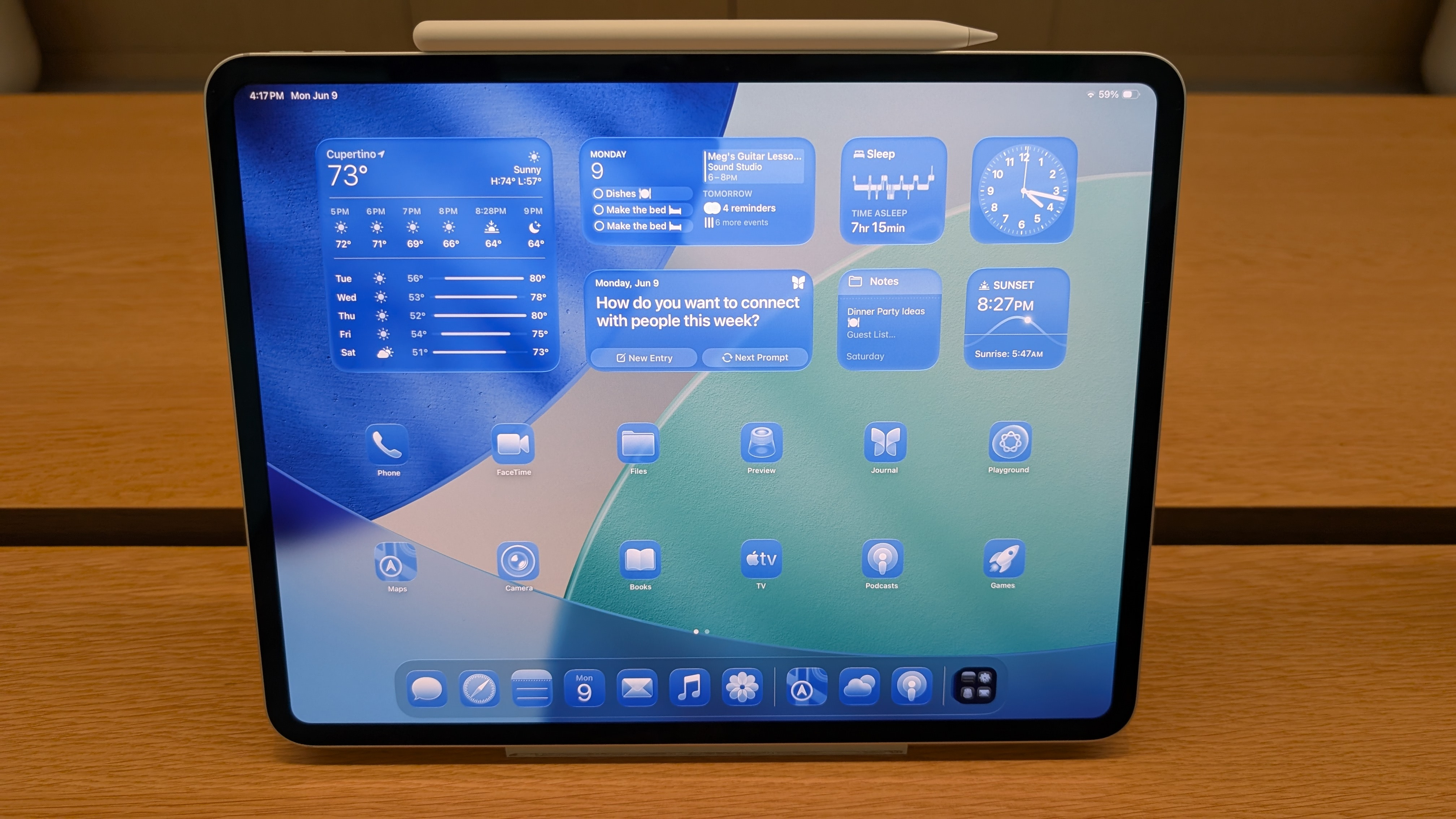
Apple iPad with iPadOS 26 set to all-clear mode
In the new OS, Taskbars, scrollbars, widgets and icons are all rendered translucent, with curved surfaces refracting and subtly distorting the contents of the screen below. It’s as if what’s on the device itself is overlaid by refined slabs of glass, dynamically changing shape and position depending on context. This is by no means a return to traditional skeuomorphism, but instead a subtle flex of the immense power of Apple Silicon, as well as enhancing the act of engaging with a phone.
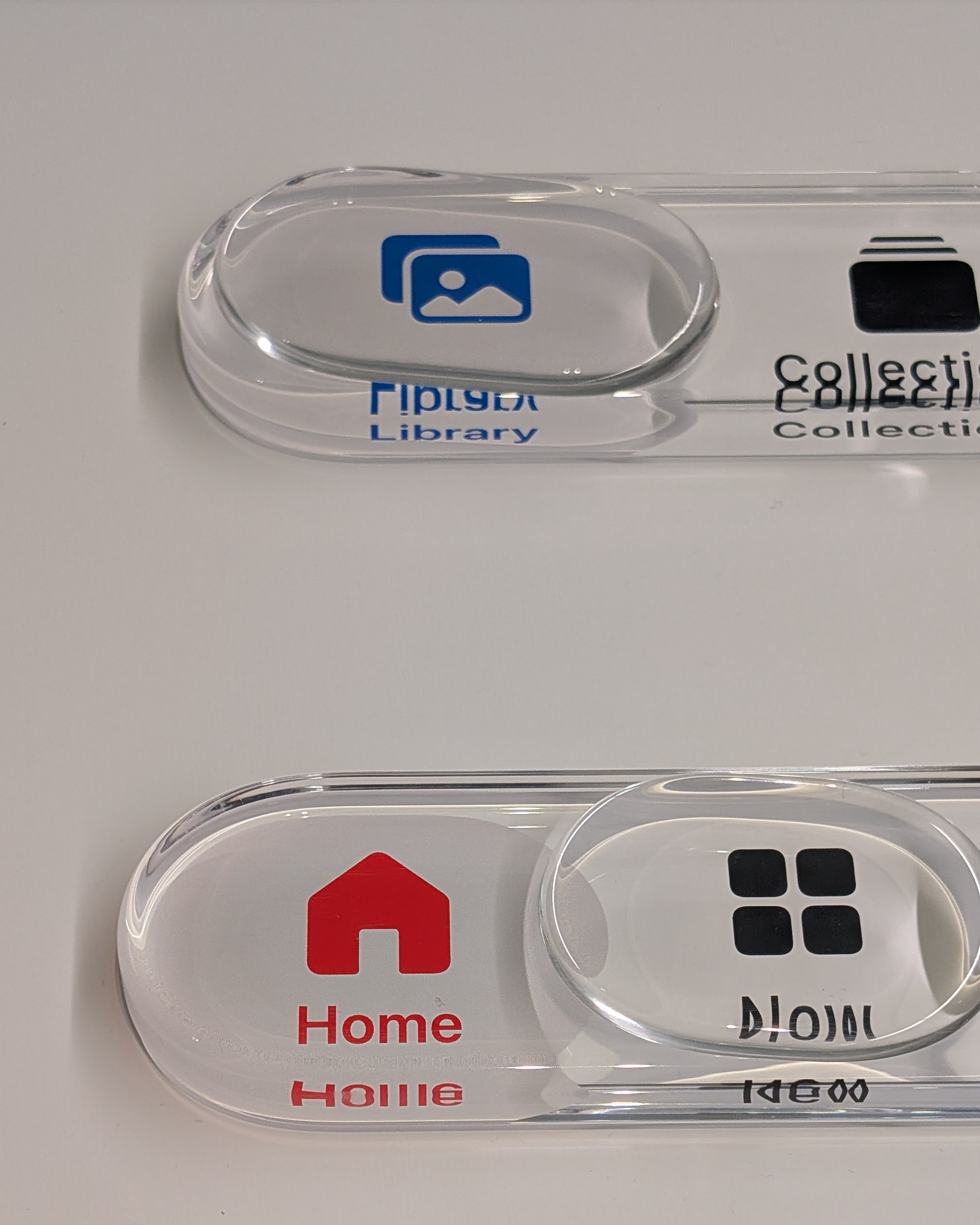
Apple used physical pieces of glass to demonstrate the new OS's underlying approach
Why might we want to engage more, you might ask? iOS 26 isn’t just about the look and feel. Together with the new design, there are numerous functional updates, many of which use Apple Intelligence as a behind-the-scenes interpreter and go-between, making seamless and useful connections between apps, services and devices.

Apple CarPlay Ultra showcasing the new Liquid Glass aesthetic
That continuity was demonstrated across the board. Joining iOS 26 is iPadOS 26, macOS 26 – known as Tahoe, watchOS 26, and tvOS 26, as well as a revitalised interface for Apple CarPlay. Apple rolled out an Aston Martin DBX to demonstrate CarPlay Ultra, and also to hint at just how widespread this new design language could become once it finds its way into our cars as well.
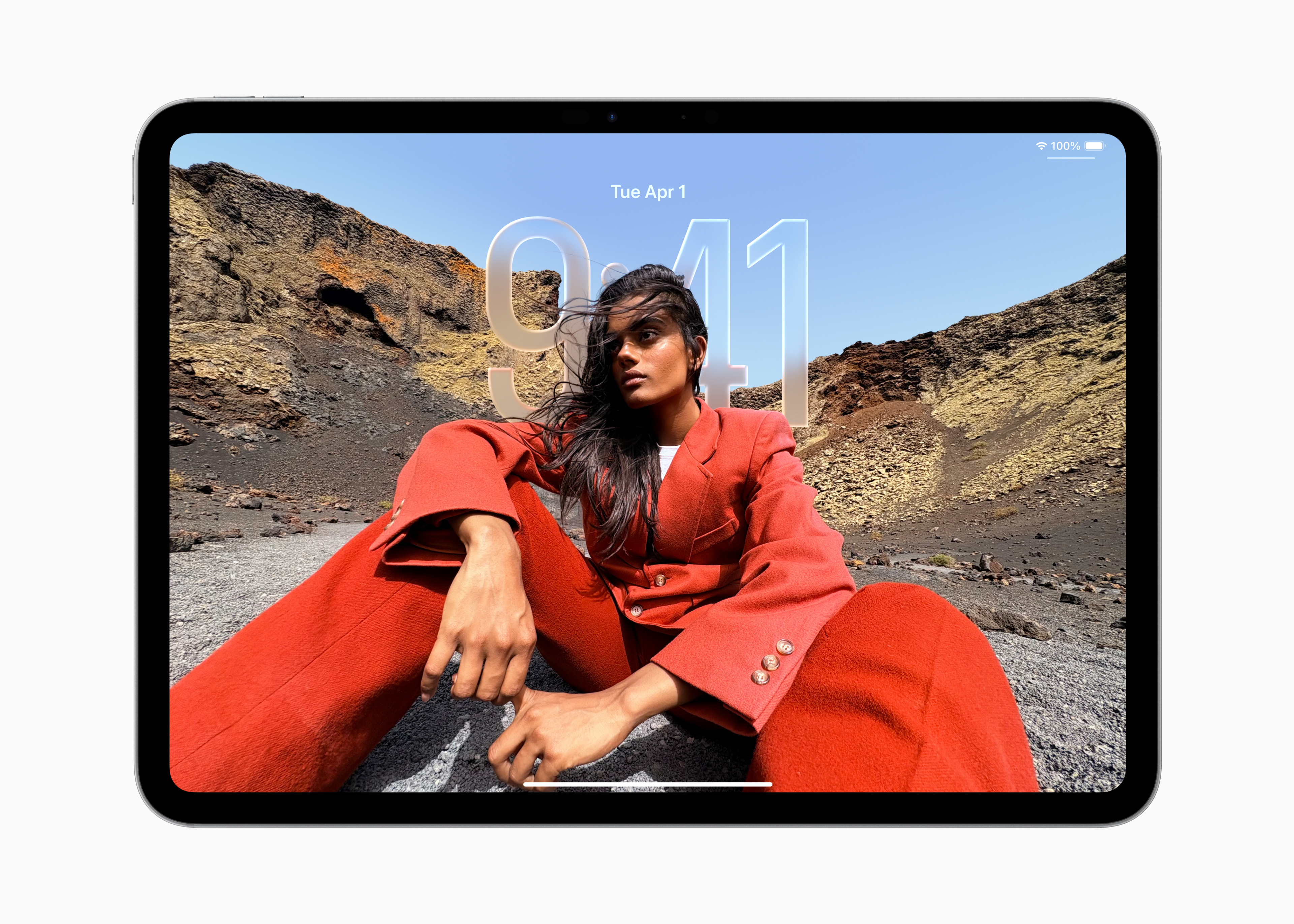
iPadOS 26 showing the dynamic clock placement on the lock screen
Also on show were a more sophisticated Dark mode, a new all-clear look that gives the entire icon pack a translucent feel (beautiful if functionally limited), new animated wallpapers, as well as a new lock screen application of the clock using Apple’s San Francisco typeface. Designed to dynamically scale the clock digits into the available space in a personal photograph or wallpaper, the lock screen serves as a showcase for iOS 26, along with new AI-driven 3D effects for 2D photographs.

Personalise your desktop like never before with macOS Tahoe 26
Throughout the presentation, Apple Park’s many attractions served as backdrops to the filmed presentations, from the oval window in the new Observatory to the ribbons of glass that make up Zeller & Moye and artist Katie Paterson’s Mirage installation. At times, Apple’s playfulness can feel a little forced, especially when you consider the very real geopolitical significance the company has in a world shaped by tech, and how it’s made, sold and used.

Apple Park, June 2025
Nevertheless, iOS 26 can be seen as a company doubling down on the importance of the smartphone, both to its customers and to its bottom line, rather than making grand pronouncements or predictions about a future screen-less era.
If you could put the iPhone of today in the hands of an original user who has never bothered to upgrade (unlikely – Apple claims that 88% of users run the latest OS version), and chances are that they’d have no trouble finding their way around. They might be a little bemused by the creeping feature set and stunned by the quality of the display (the iPhone 16 Pro’s 6.3” Super Retina XDR display has a resolution of 2622‑by‑1206 pixels). But the basics of the icon-driven interface have remained familiar and look set to stay that way for at least another 12 years.
Head: Under the hood of iOS 26 and its siblings
Read on to find out more about the many new innovations in Apple’s portfolio of revitalised operating systems.
Apple iOS 26
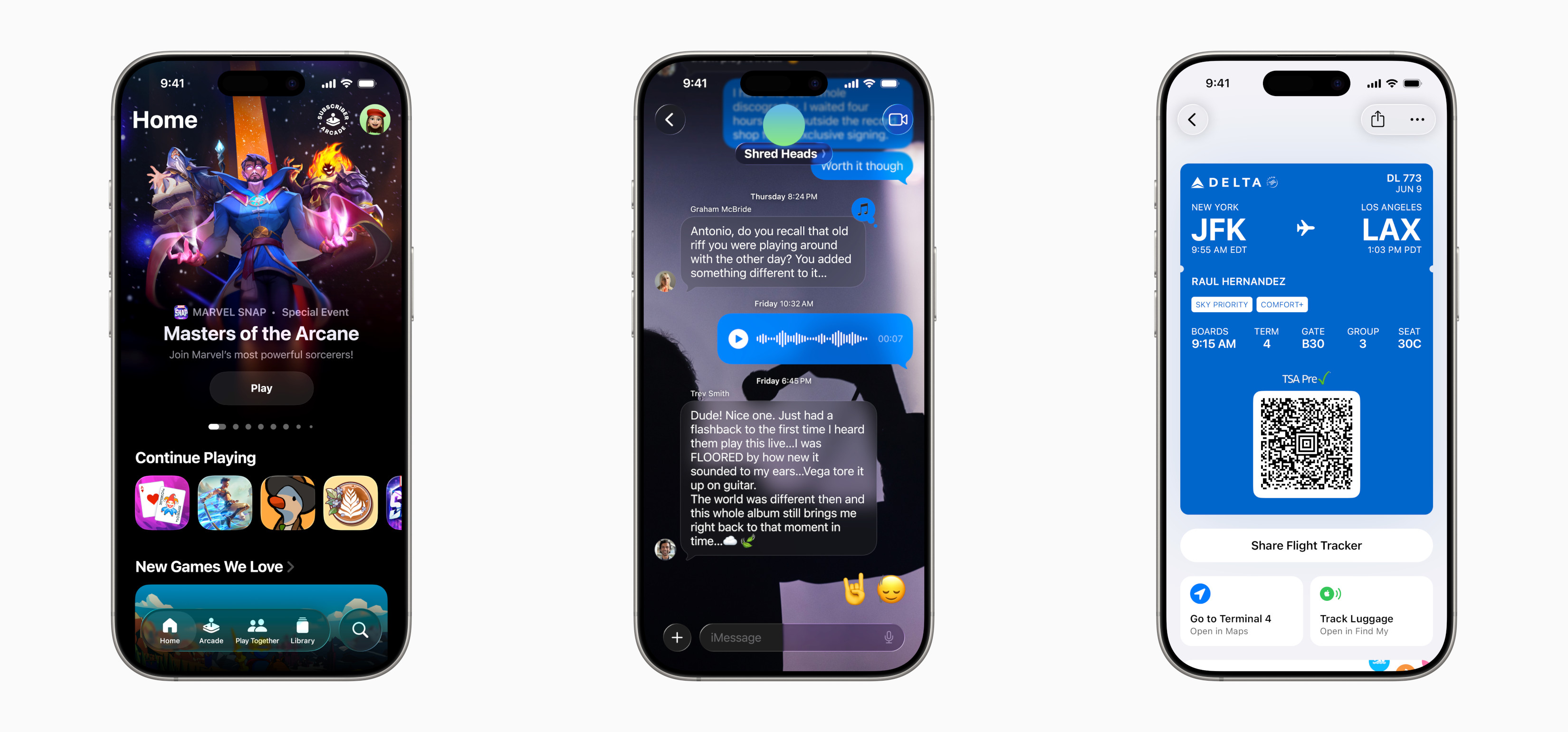
Apple iOS 26
From left to right, Apple iOS26 includes a new dedicated Games app for iPhone, as well as dynamic backgrounds in Messages. Apple Wallet's functionality has been expanded, with options for virtual passports and drivers license (in some States in the US, but not all), as well as elements like boarding passes adding more layers of information.

Apple iOS 26
Apple iOS 26's new Live Translation function works in calls - even to non iPhone users - as well as in video chats and Messaging. Hold Assist is another new function designed to take the effort out of waiting for a human adviser to come to the line - it automatically detects hold music and alerts you when it's finally finished.
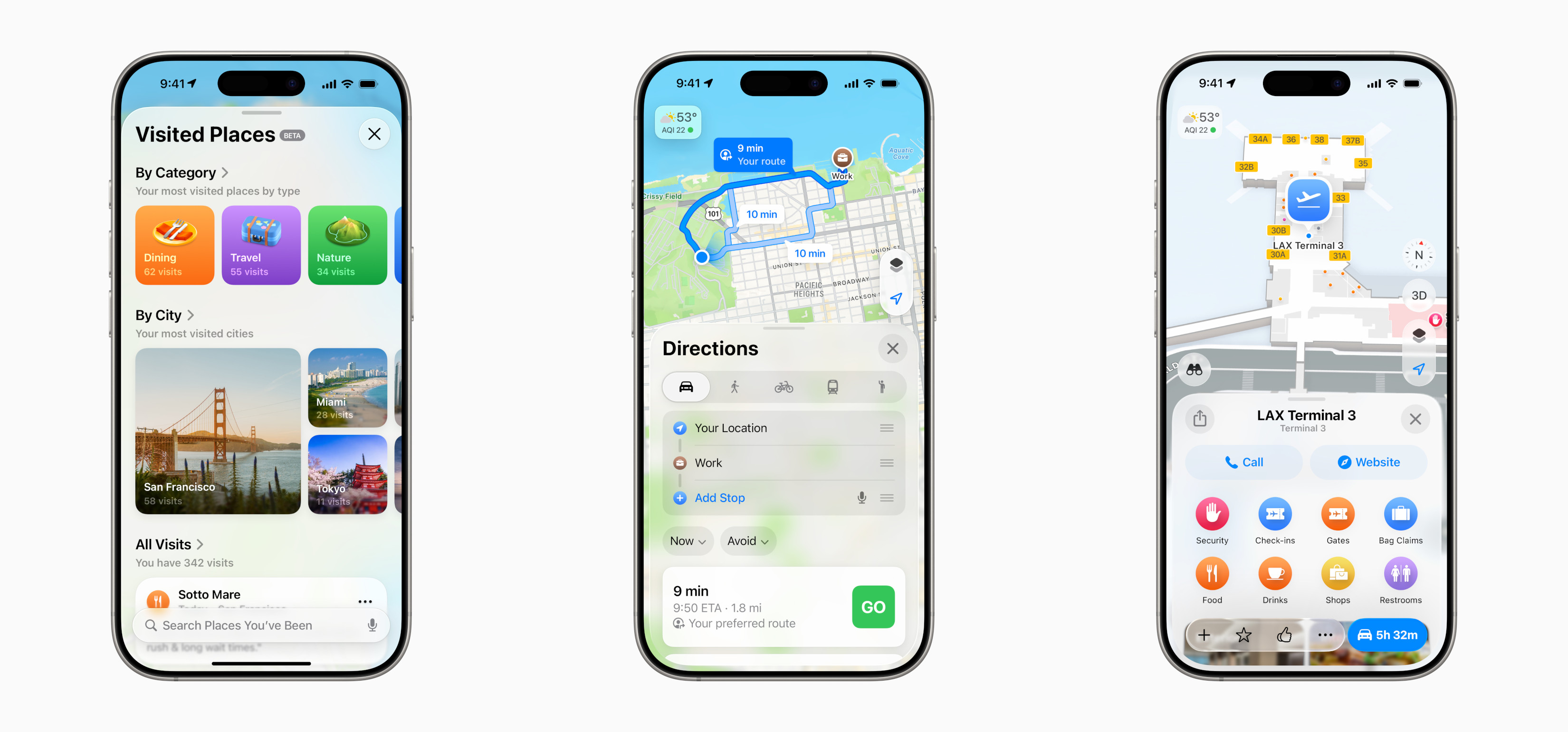
Apple iOS 26
From left, Apple iOS 26 Maps now has a new Visited Places section, as well as a dynamically updated Preferred Routes option, which will show regular commutes or journeys alongside alternatives. Indoor Mapping abilities have also been updated.
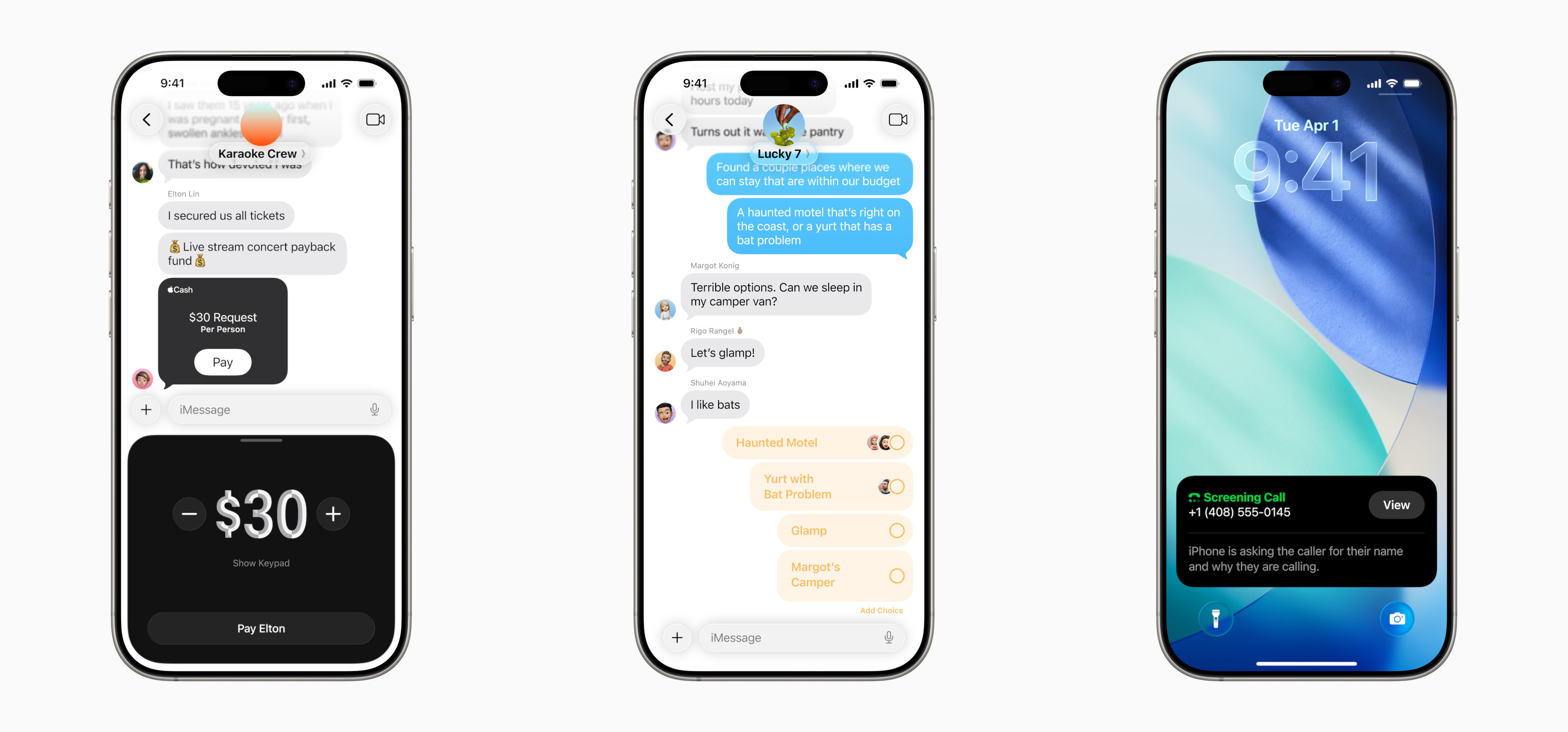
Apple iOS 26
From left to right, small but disinct enhancements add to i0S 26's functionality, from the integration of Apple Cash into Group Chats, alongside a new Polls function. Meanwhile, AI is used to automatically screen unknown callers in order to filter out telemarketers, spam and robocalls.
Apple watchOS 26
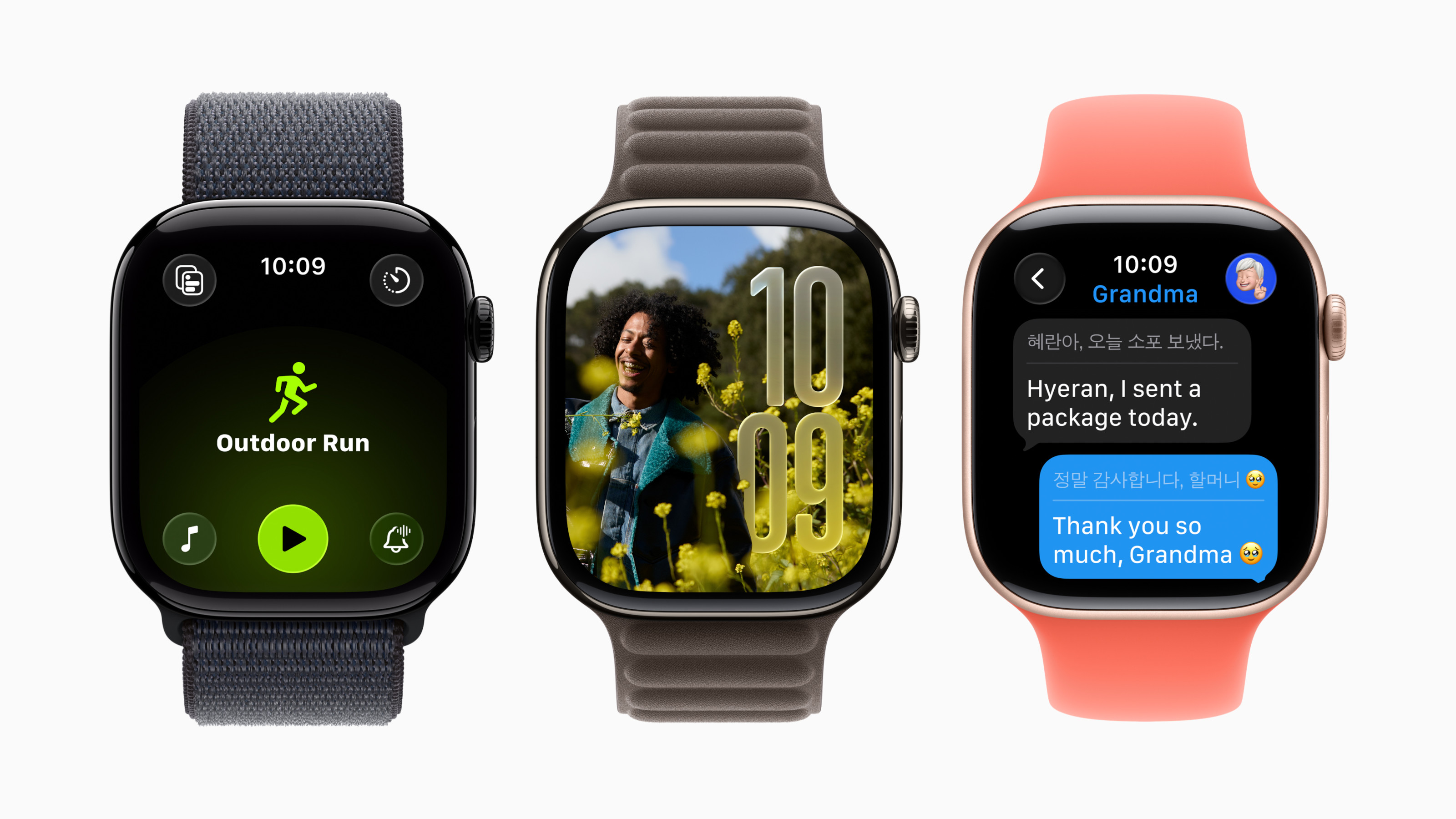
Apple watch OS 26
Apple watch OS 26 brings all the aesthetic and functional updates of iOS 26 to your wrist, with new AI-powered Workout Buddy that'll gather fitness data and provided tailored workouts and words of encouragement.
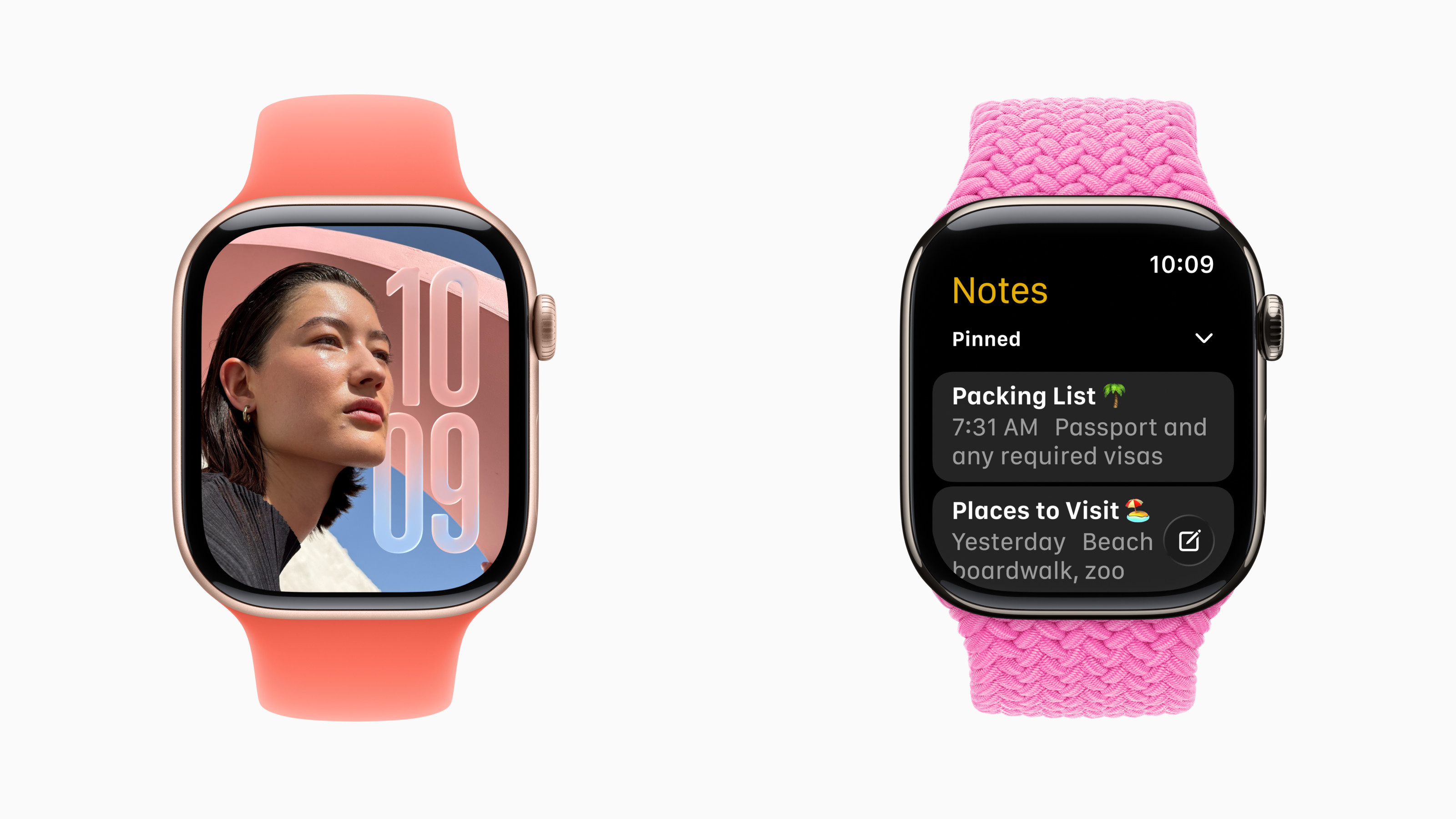
Apple watchOS 26
Liquid Glass's dynamic approach to typography and imagery is also showcased in watchOS 26. Amongst other additions, the Apple Watch now gets an all-new Notes app. Live Translation is also available on Apple Watch, along with context-sensitive alerts that automatically tailor their volume based on the noisiness (or otherwise) of your surroundings.
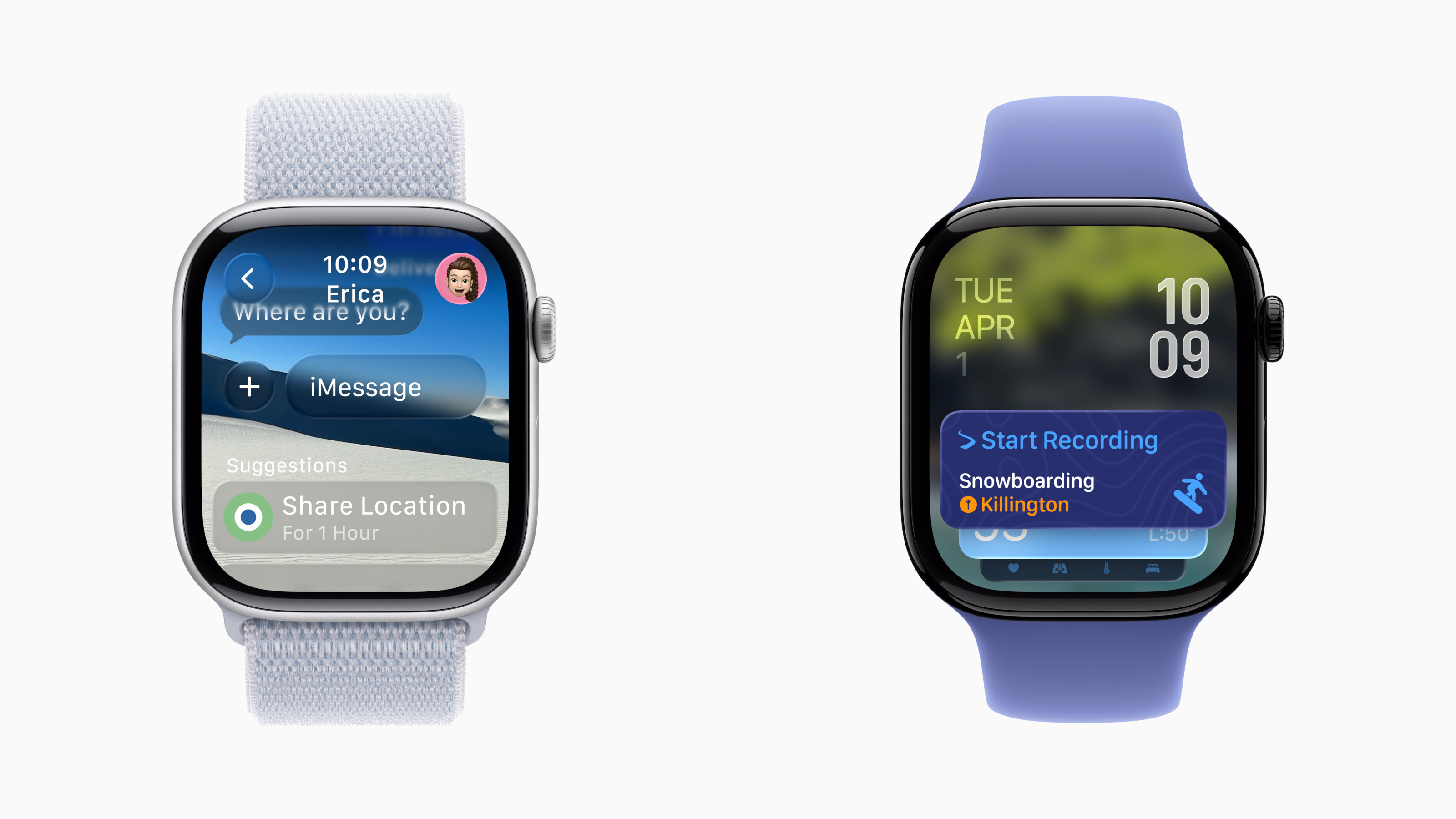
Apple watchOS 26
Amongst the improvements in Apple watchOS 26 are better context awareness, especially in the Stack (seen at right) of apps and information. Potentially useful features are highlighted depending on where you are or the message you've received.
Apple iPadOS 26

Apple iPadOS 26
All the OS updates found in iPhone also come over to iPad thanks to Apple iPadOS 26. Elements like the new animated album art feature in Apple Music are particularly effective on the iPad's large screen.
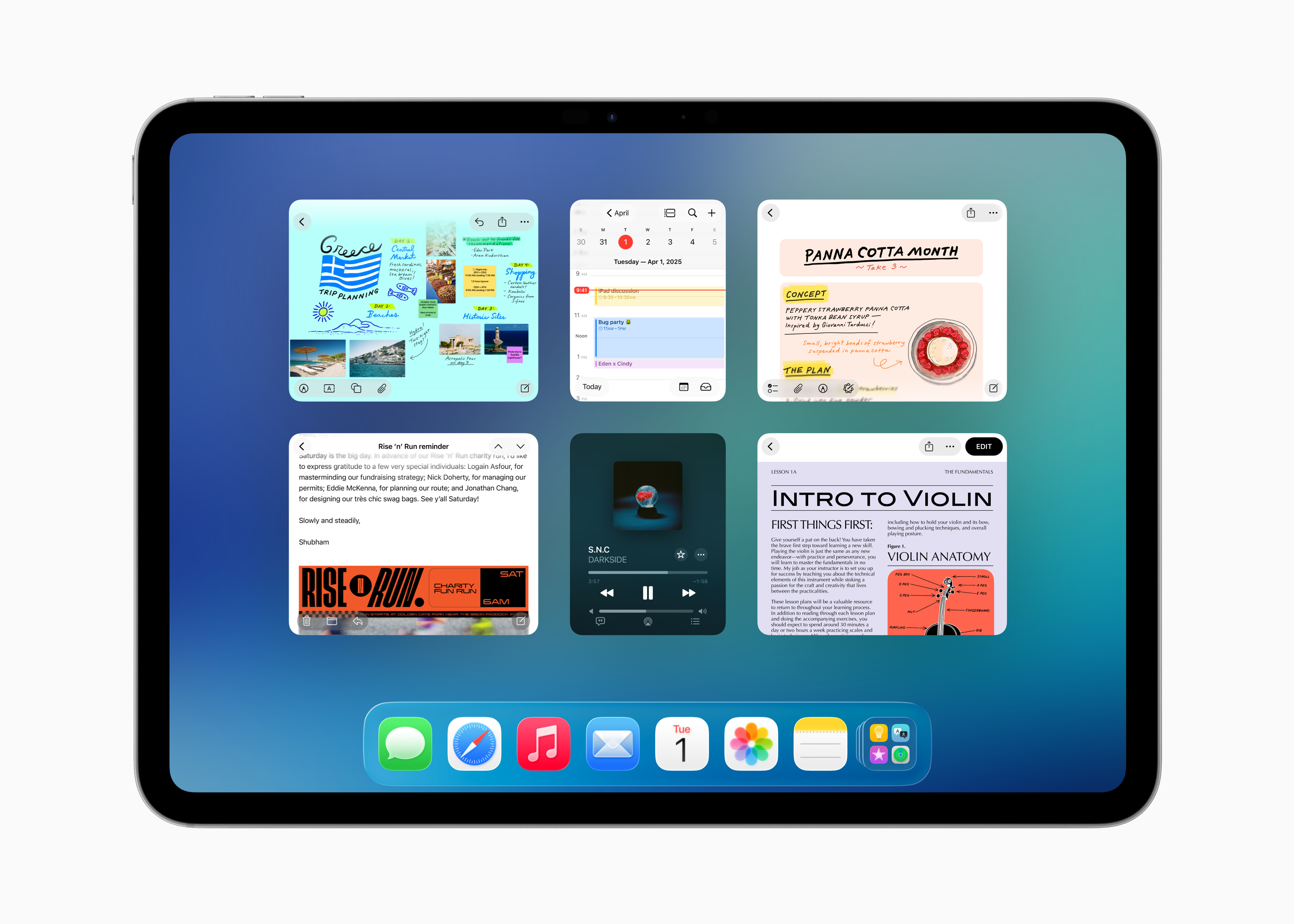
Apple iPadOS 26
Apple iPadOS 26 allows your iPad to become much better at multitasking, in addition to allowing background processes like rendering to run without interrupting your workflow.
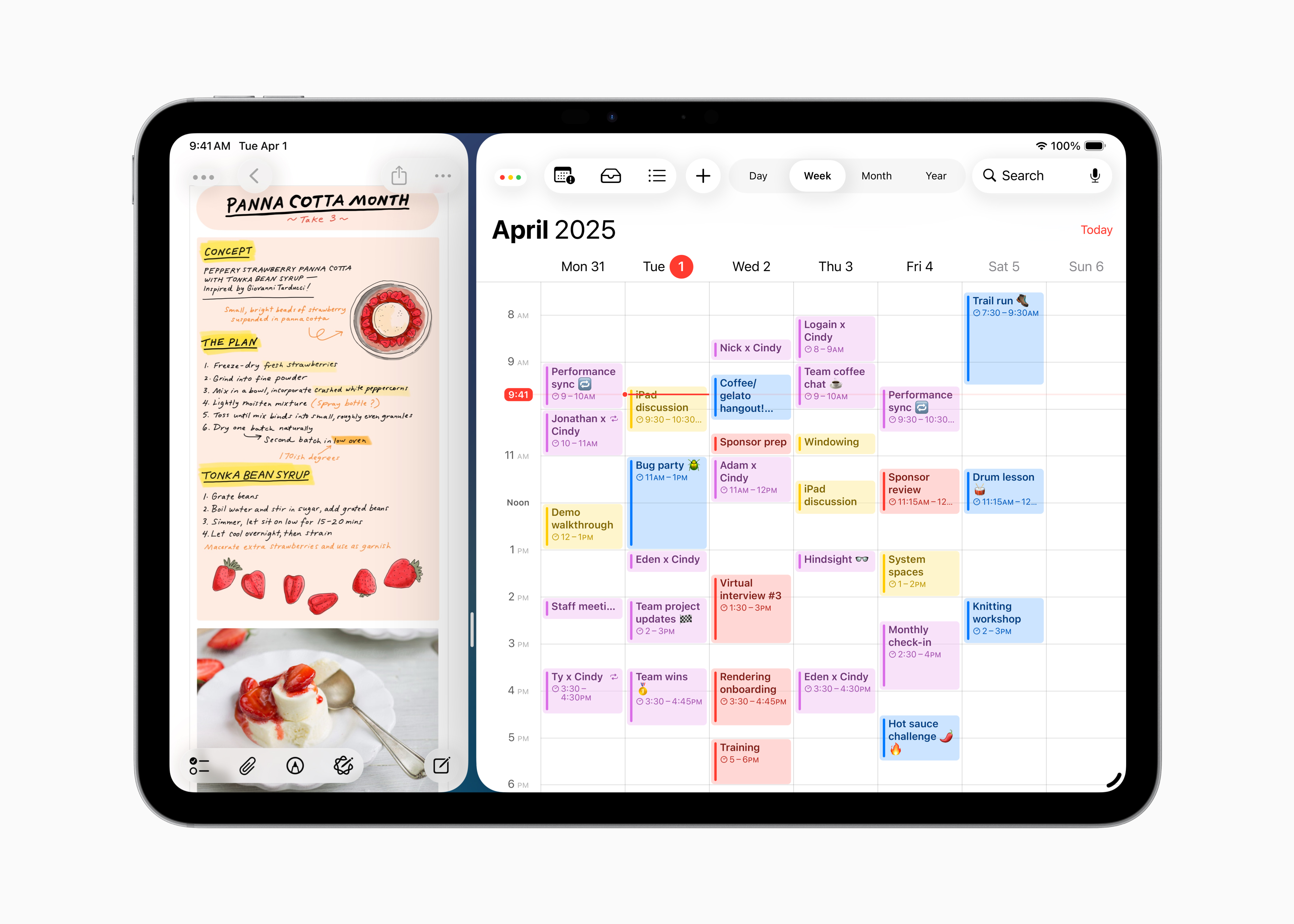
Apple iPadOS 26
A major new innovation in Apple iPadOS 26 is the introduction of improved multitasking and app tiling, as well as better search and file management, a new Journal app and enhanced controls over audio input, including the ability to block out ambient sounds.
Apple tvOS 26

Apple tvOS 26
Apple tvOS 26 sees an overhaul of the interface, with larger icons for the library, different user profiles and the Liquid Glass aesthetic, which works especially well when overlaid on ongoing content. Another fun function is the ability to run a karaoke session through Apple Music, with every participant using their own iPhone as a mic.
Apple macOS Tahoe 26
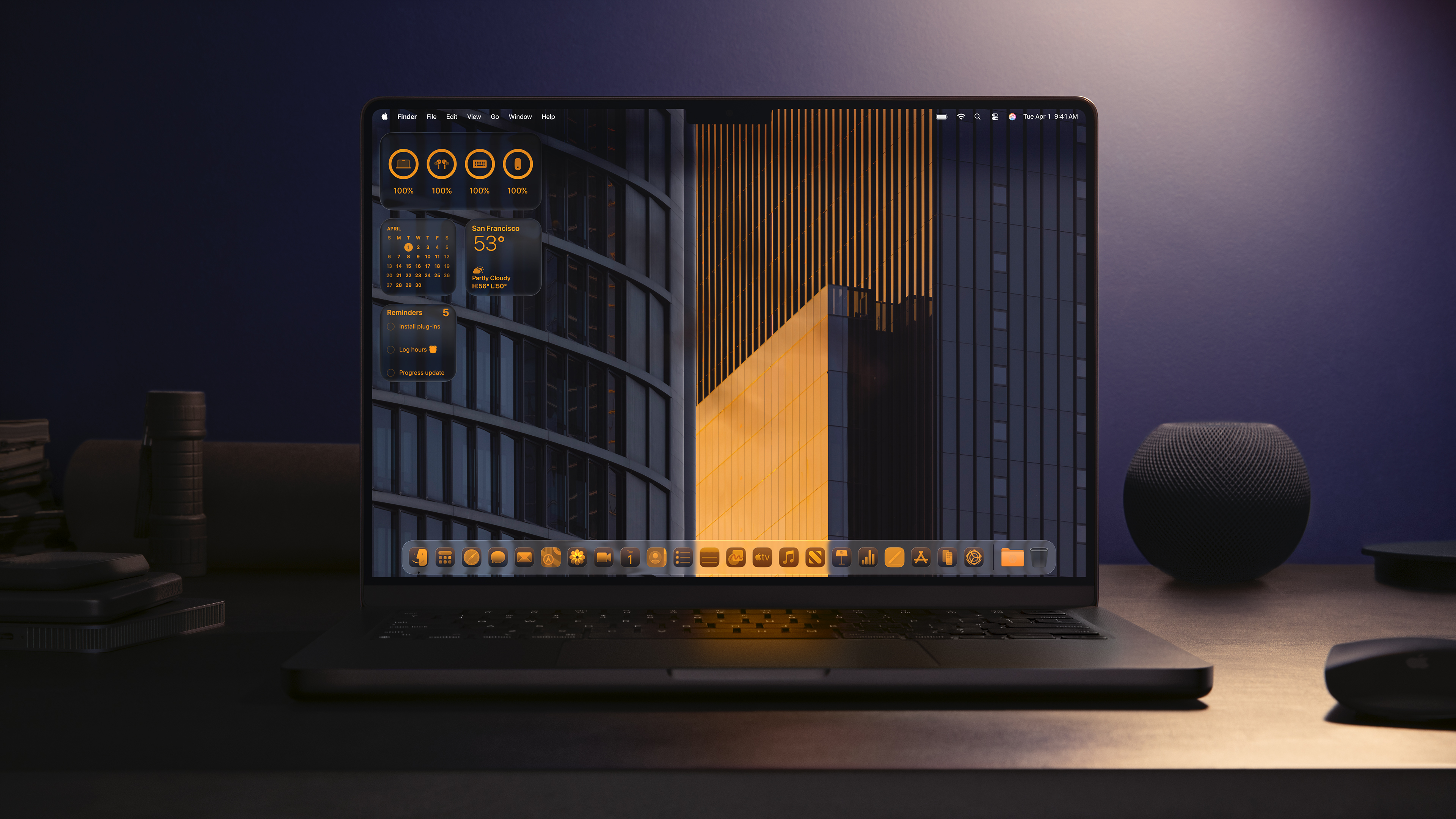
Apple macOS Tahoe 26
Apple macOS Tahoe 26 demonstrates how Liquid Glass works on a large display, with high levels of customisation that include different folder colours and the ability to append icons to folders. Shown here is the Dark Mode.
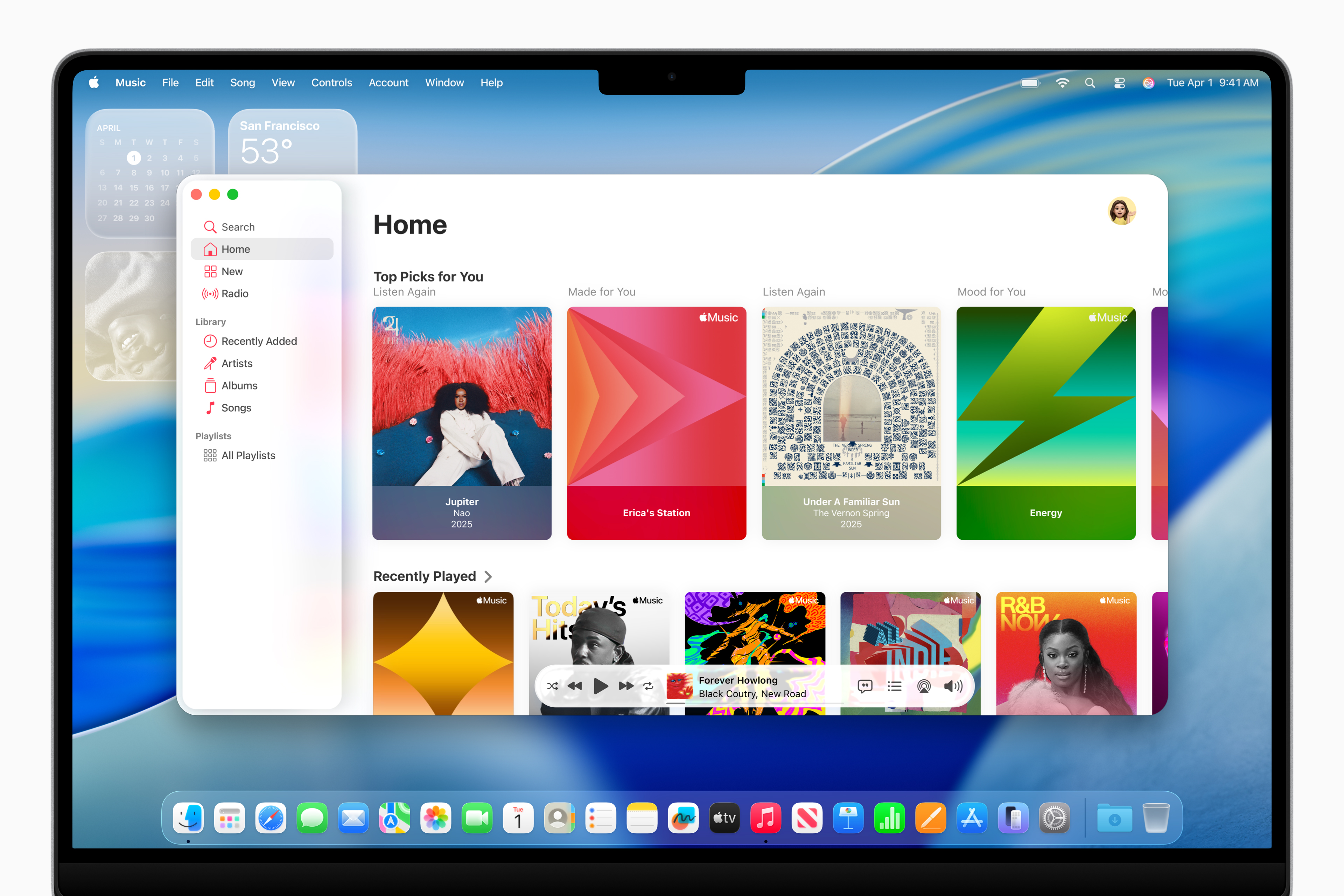
Apple macOS Tahoe 26
In addition to Music's new animated album art feature, Apple macOS Tahoe 26 introduces easier ways to manage your music and pin favourites to the top of the app.
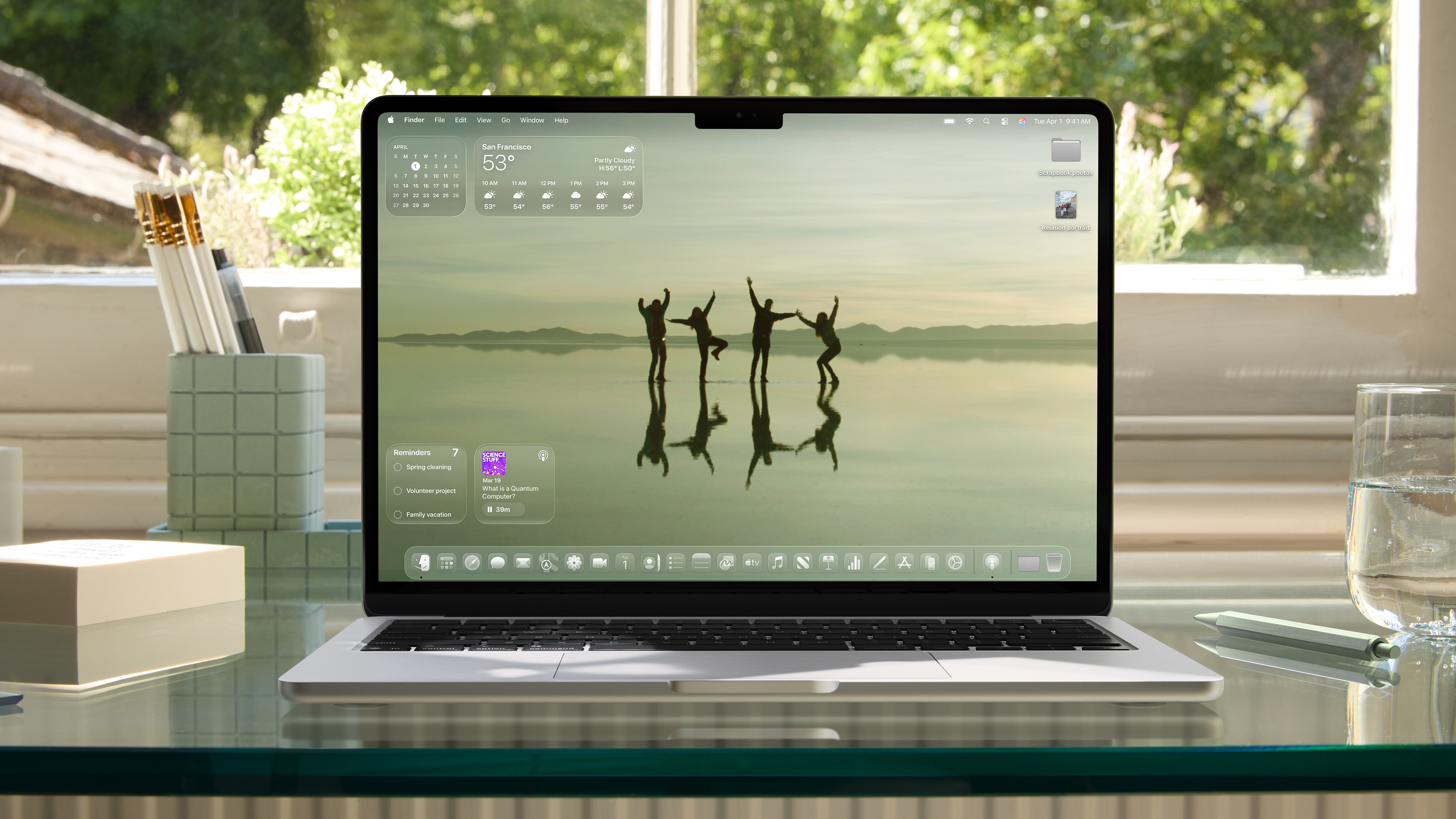
Apple macOS Tahoe 26
The power of Apple's new generation silicon is what enables Liquid Glass to be such a seamless experience. In macOS Tahoe 26, the graphical boost is joined by all the other enhancements from across the range, including the new Games app, translation functions and AI-facilitated continuity, like being able to screen and take calls, track orders and search your files and images.
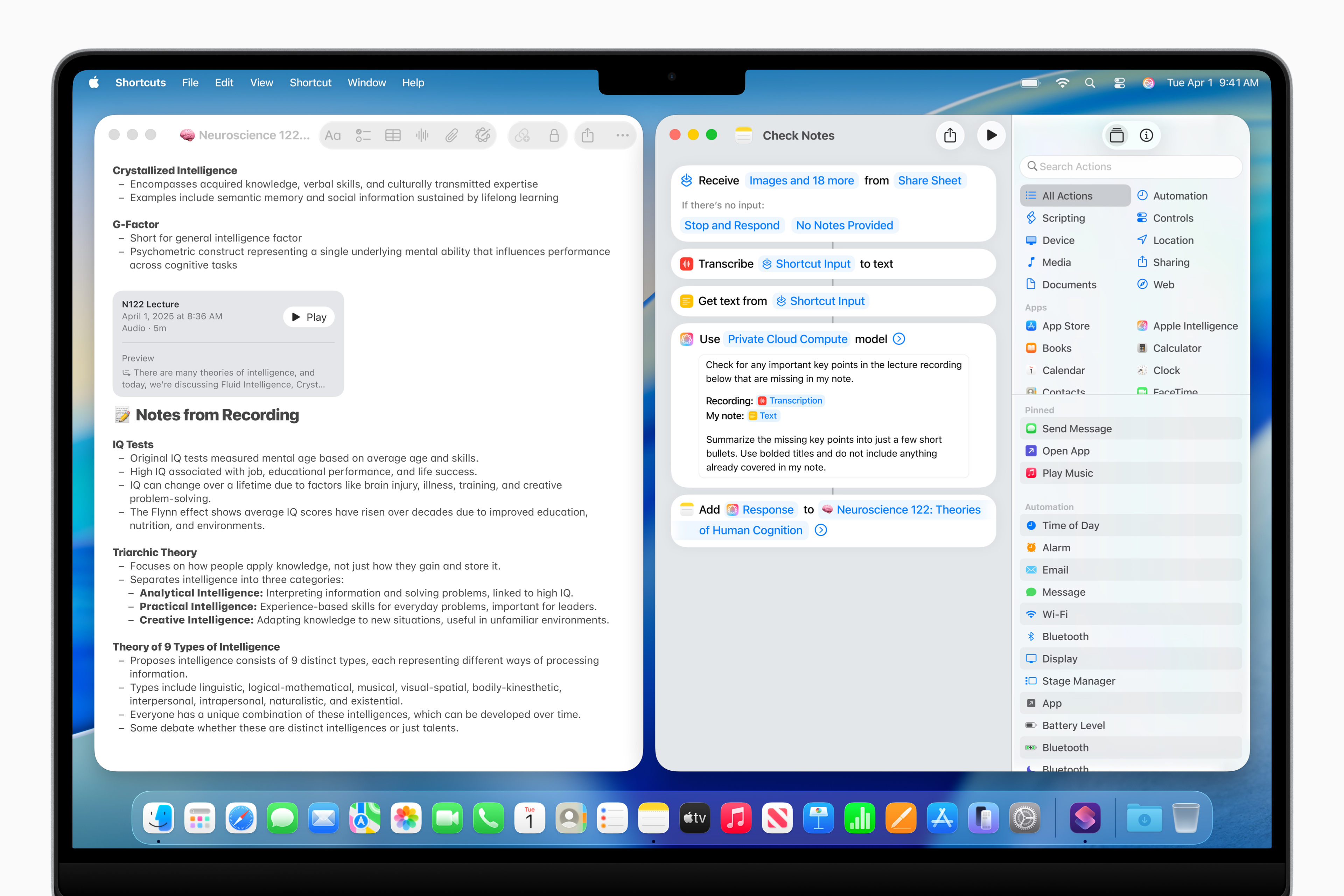
Apple Intelligent Actions
For power users, Apple Intelligent Actions enables different functions to be stitched together to do thinks like tap directly into Apple Intelligence models - create a bespoke headline, removing an image background etc - all triggered by a custom text prompt.
Apple visionOS 26
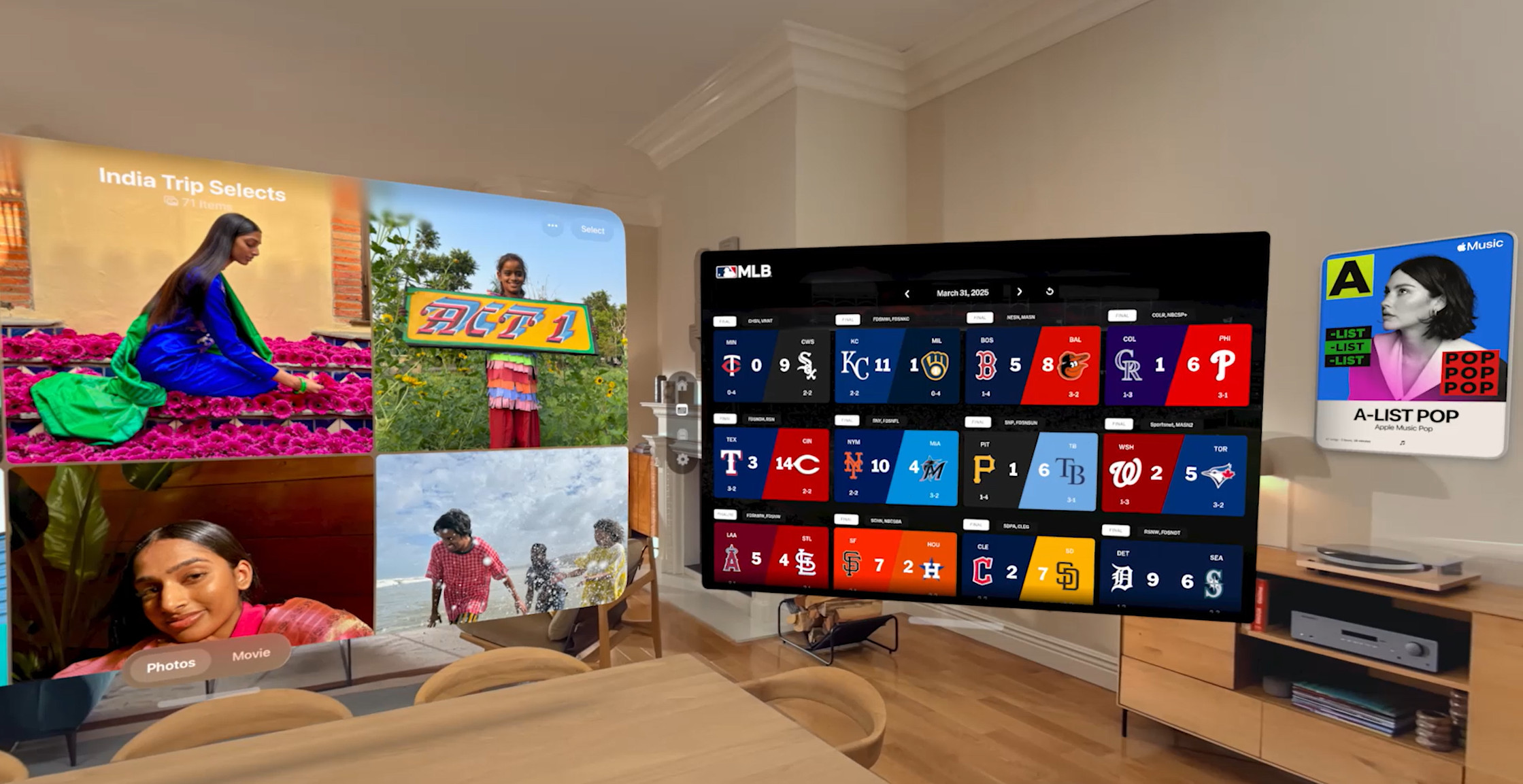
Apple visionOS 26
The device that kickstarted the idea of Liquid Glass design, the Apple Vision Pro's new visionOS 26 is an expansive update that adds both consumer and enterprise functions. The latter include the ability to manage a common pool of Vision Pros using iPhone-based user information. Once you're sharing a project, there's new support for dedicated accessories like the Logitech Muse 3D and existing ones like the PlayStation VR2 Sense controller. Vision Pro users can also now also explore 360 content created using GoPro, Insta360 and Canon cameras.

Apple visionOS 26 Personas old and new
Apple has used AI to massively upgrade the realism of your Persona, the virtual avatar used when you're making calls between Vision Pros. I was particularly impressed by the introduction of spatial widgets into the Vision Pro - here they work like artworks or accessories that can be placed on walls, desks, shelves or ceilings and are persistent, meaning they'll be in the same space next time you use the device. Finally, the ability to browse objects on a website and 'pull' them out into your own space is something Apple describes as 'the beginnings of the spatial web.'

A new era of AI-led search awaits iOS 26 users
Jonathan Bell has written for Wallpaper* magazine since 1999, covering everything from architecture and transport design to books, tech and graphic design. He is now the magazine’s Transport and Technology Editor. Jonathan has written and edited 15 books, including Concept Car Design, 21st Century House, and The New Modern House. He is also the host of Wallpaper’s first podcast.
-
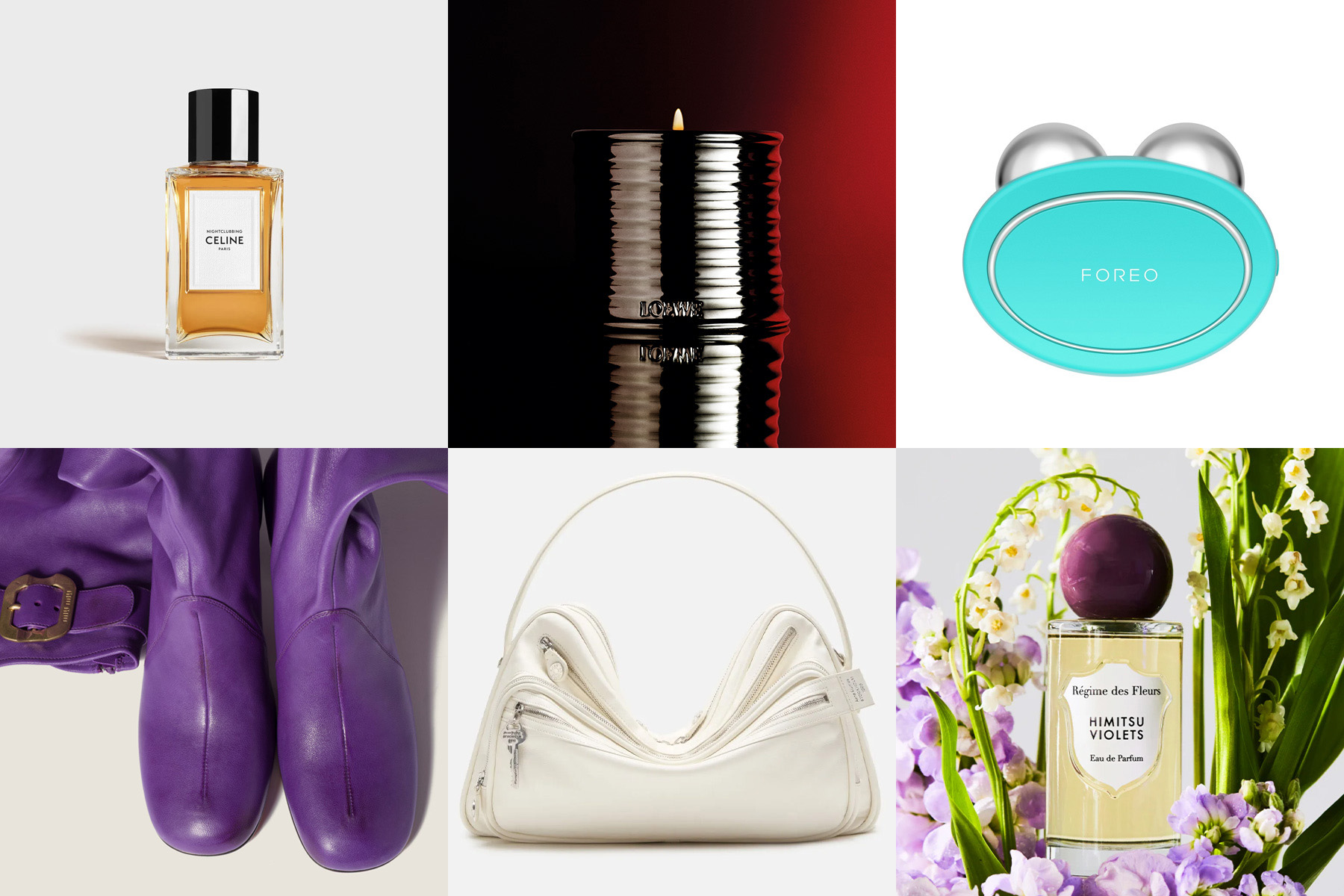 Wallpaper* Gift Guides: What beauty editor Mary Cleary has on her wishlist
Wallpaper* Gift Guides: What beauty editor Mary Cleary has on her wishlistWallpaper* contributing beauty editor Mary Cleary shares the items she is hoping to unwrap this holiday season – from transporting fragrances to a must-have skincare device
-
 A Dutch visitor centre echoes the ‘rising and turning’ of the Wadden Sea
A Dutch visitor centre echoes the ‘rising and turning’ of the Wadden SeaThe second instalment in Dorte Mandrup’s Wadden Sea trilogy, this visitor centre and scientific hub draws inspiration from the endless cycle of the tide
-
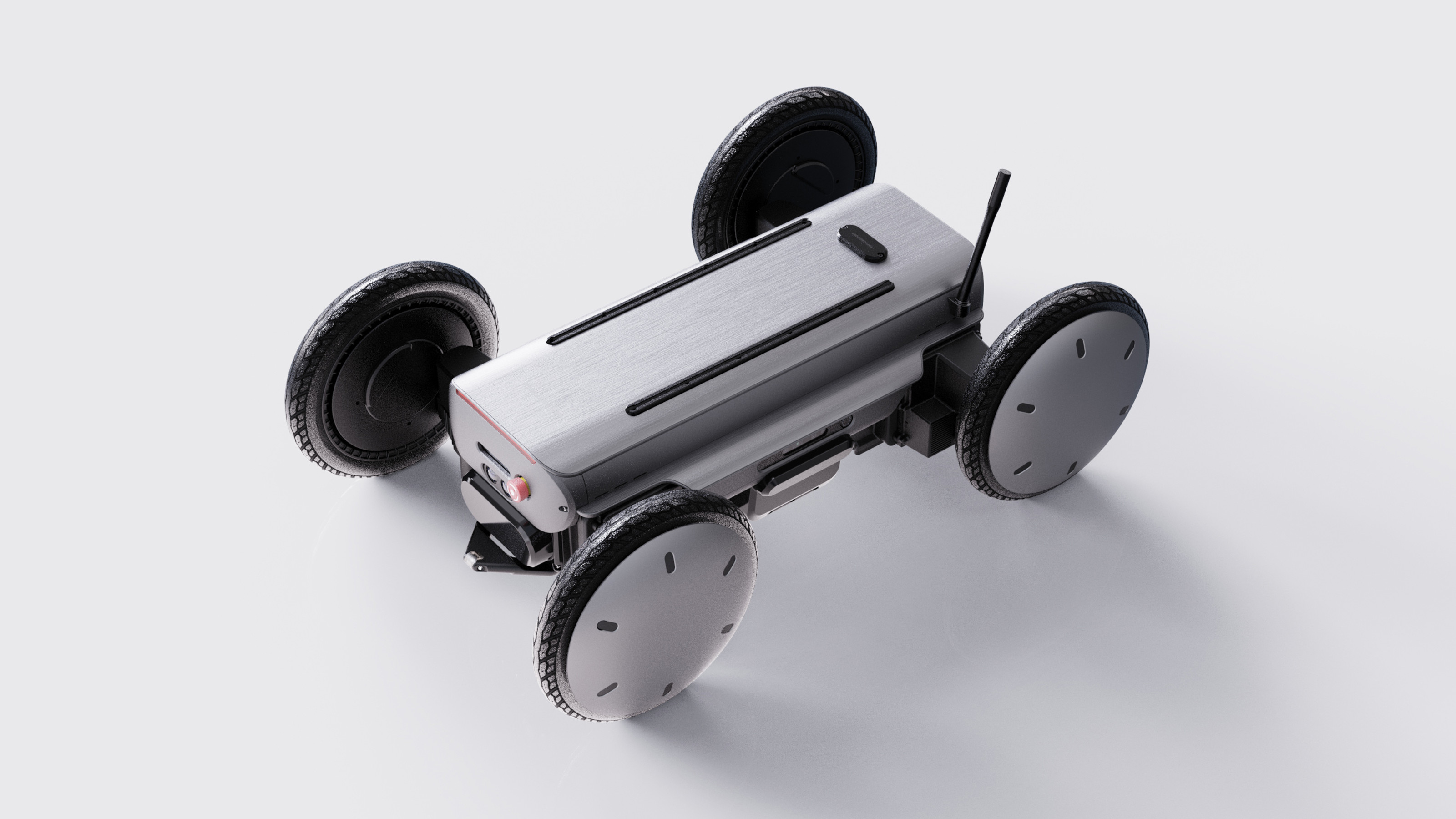 Hyundai is the latest car company to get into robotics: meet the Mobile Eccentric Droid
Hyundai is the latest car company to get into robotics: meet the Mobile Eccentric DroidThe MobED is a new product from Hyundai’s Robotics LAB, pitched at last-mile delivery and industrial applications
-
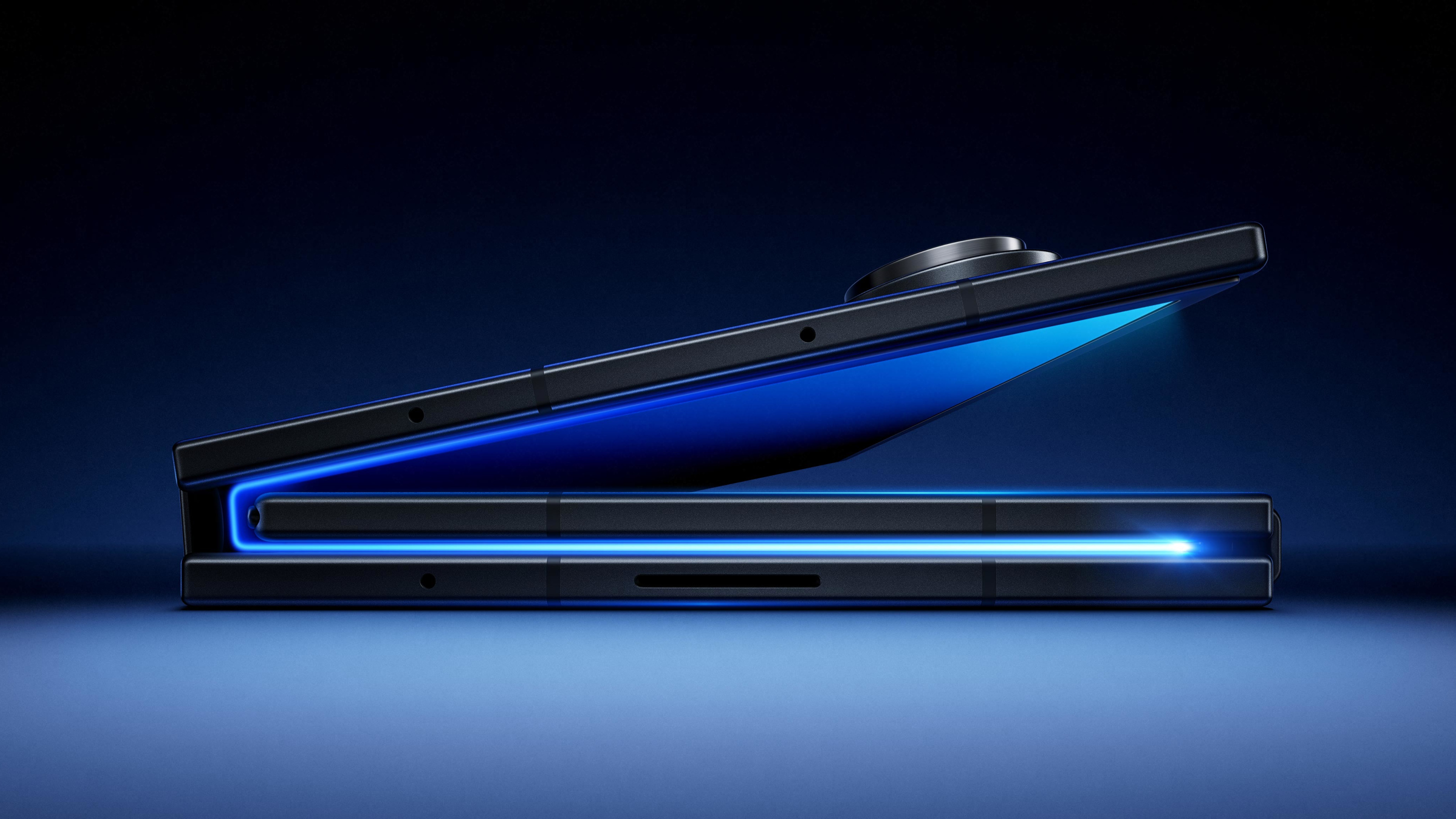 Samsung Galaxy Z TriFold is a pocket tablet that takes folding screens to new extremes
Samsung Galaxy Z TriFold is a pocket tablet that takes folding screens to new extremesSamsung has announced its newest flagship device, the Galaxy Z TriFold. Featuring three folding screens, this ultimate smartphone can transform into a ten-inch tablet
-
 Hunker down in a perfectly equipped work-from-home hub this winter
Hunker down in a perfectly equipped work-from-home hub this winterIf your WFH set-up needs an upgrade, or if you need to kit out a new small business from scratch, we’ve got you covered
-
 Apple Watch Ultra 3 has innovation at its heart – a 3D-printed titanium case
Apple Watch Ultra 3 has innovation at its heart – a 3D-printed titanium caseWe delve into Apple’s pioneering use of 3D-printed metal, and how it ties in with the company’s path to carbon neutrality
-
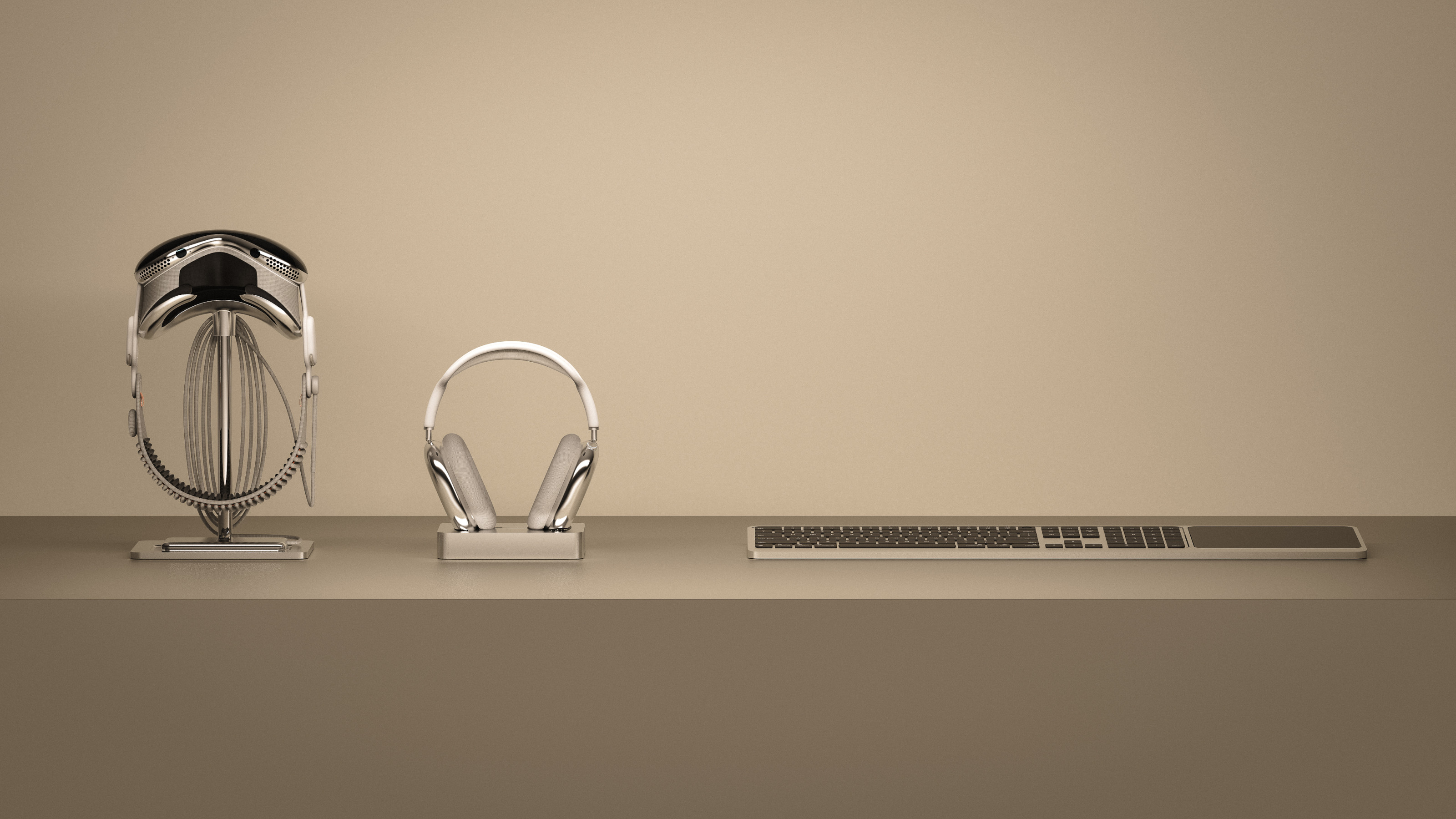 Bionic Labs builds precision next-level Apple accessories from aluminium and stainless steel
Bionic Labs builds precision next-level Apple accessories from aluminium and stainless steelFrom stands, chargers and keyboard trays to a set of accessories for the Vision Pro, Parisian design studio Bionic Labs offers only the best for your Apple gear
-
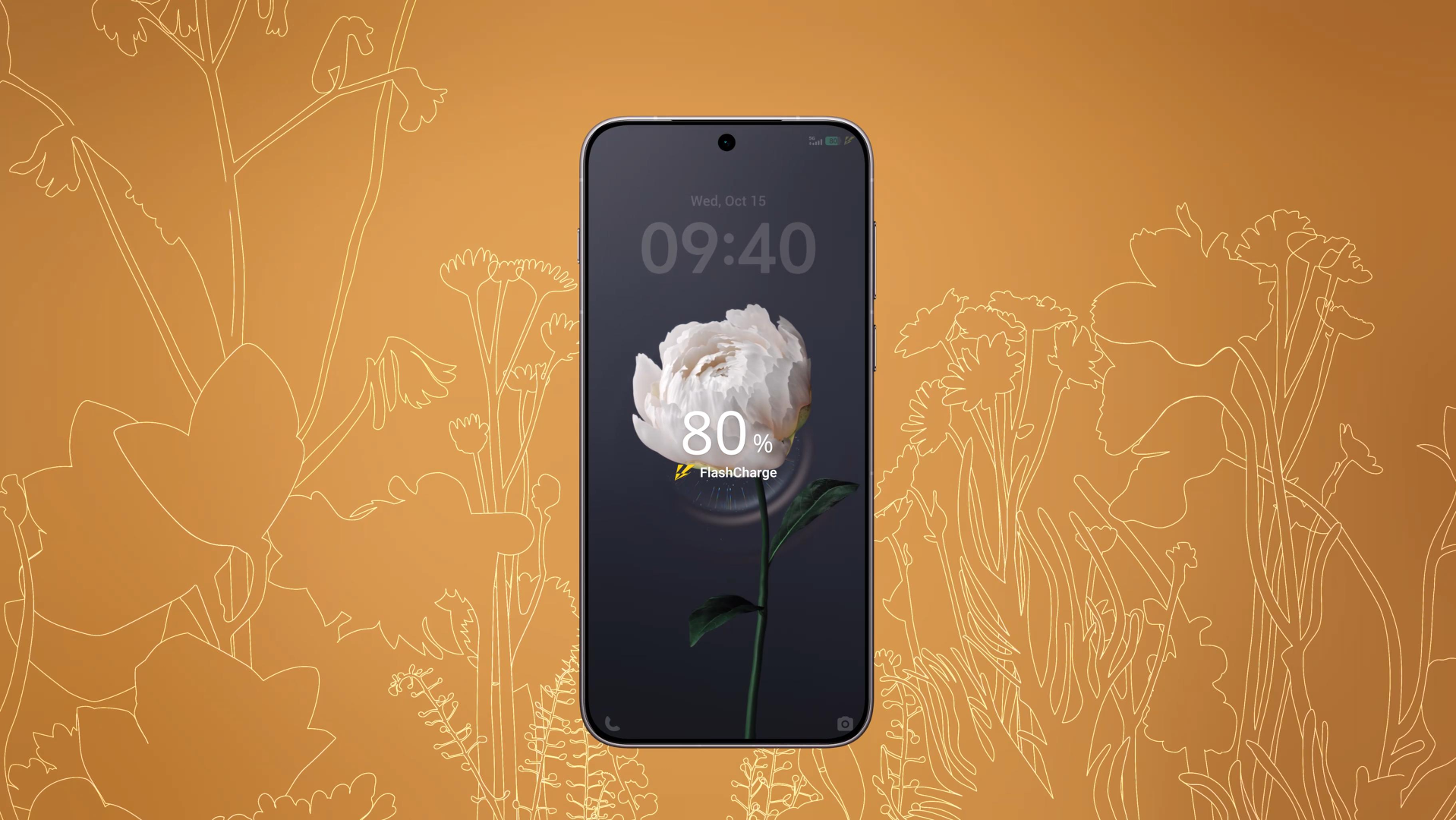 Vivo launches OriginOS 6, for a smooth and intelligent mobile experience
Vivo launches OriginOS 6, for a smooth and intelligent mobile experienceSuperior AI, next-level graphics and a seamless user experience make this Vivo’s most sophisticated operating system yet
-
 The best wireless in-ear headphones, tested by experts
The best wireless in-ear headphones, tested by expertsOur latest round up of the best wireless in-ear headphones includes products from Apple, Bang & Olufsen, Bose, JBL, Nothing, and Sony
-
 We roadtest Apple’s newest wearable tech, the Apple Watch Ultra 3 and Series 11
We roadtest Apple’s newest wearable tech, the Apple Watch Ultra 3 and Series 11The Apple Watch Ultra 3 hardly reinvents Apple’s most ruggedly handsome of designs, but it does refine it. And for truly off-grid adventurous types, it adds some potentially critical capabilities
-
 The Apple iPhone Air leads the company’s round of autumn product launches
The Apple iPhone Air leads the company’s round of autumn product launchesThe new Apple iPhone 17 range boasts better cameras, more memory and more Apple Silicon. It launched alongside new Apple Watches, new AirPods and the remarkable iPhone Air. We explore out the key innovations and products